Wetlands are a unique ecosystem that is home to a diverse range of wildlife species, one of the most prominent being birds. Birds have adapted themselves to thrive in the wetland conditions, utilizing the abundant resources of food, water, and shelter that the habitat provides.
Their flights through the wetlands and their diverse array of calls and songs add to the biodiversity of the ecosystem.
With wetlands being one of the most economically and ecologically valuable ecosystems on the planet, birds play an important role in maintaining the balance of the food chain, as well as providing essential services such as pollination and seed dispersal.
We’ll explore the different types of birds that can be found in wetlands along with their ecological significance.
1. Cranes
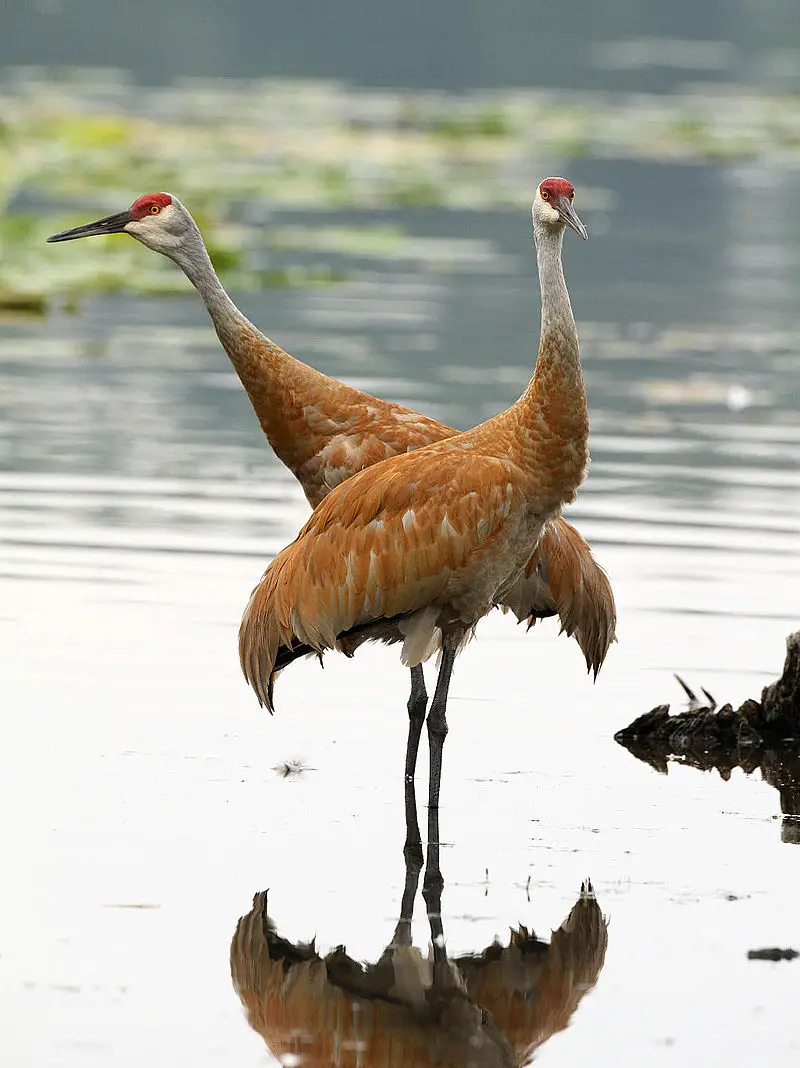
Cranes are majestic birds that can be found on most continents except Antarctica and South America. They are in the Gruiformes group of birds and belong to the family Gruidae.
Cranes have long legs, and long necks, and stand out from other birds due to their impressive size.
When they fly, they do so with their necks outstretched rather than pulled back like many other similar-looking species like herons.
There are fifteen species of cranes that are divided into three genera: Antigone, Balearica, and Grus.
They are a sight to behold and are sure to leave a lasting impression on anyone lucky enough to observe them in their natural habitat.Scientific classification:
| Kingdom | Animalia |
| Phylum | Chordata |
| Class | Aves |
| Order | Gruiformes |
| Superfamily | Gruoidea |
| Family | GruidaeVigors, 1825 |
Also Featured In: Most Common Birds in China, African Birds
2. Bitterns
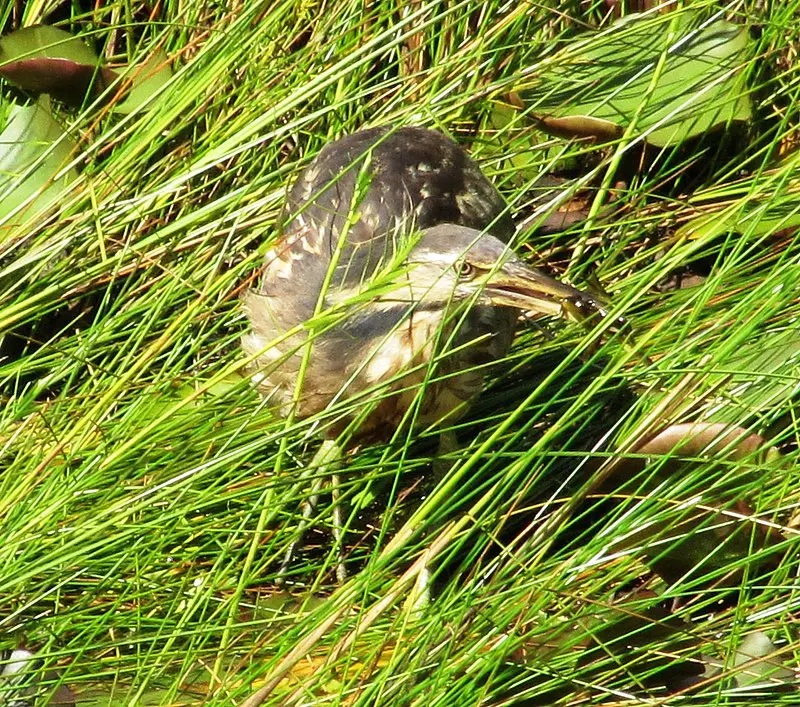
Bitterns are a type of heron, belonging to the Ardeidae family. They have shorter necks and tend to be more secretive than other members of this group.
These birds can usually be found near reed beds or wetlands, where they make their distinctive ‘booming’ call as part of their mating ritual.
Bitterns feed on insects, fish and amphibians which inhabit these areas – catching them with their long pointed bills.
Although bitterns are well camouflaged due to their brown-and-black striped feathers when standing still among reeds, they will fly away quickly if disturbed by humans nearby.Scientific classification:
| Kingdom | Animalia |
| Phylum | Chordata |
| Class | Aves |
| Order | Pelecaniformes |
| Family | Ardeidae |
| Subfamily | Botaurinae Reichenbach, 1850 |
Also Featured In: Birds Found in Hungary, Queensland Birds You Should Know
3. Red-Winged Blackbird

The red-winged blackbird is a beautiful bird found in most of North America and Central America.
Its distinct features include a glossy black body, with white shoulder patches and bright red wing coverts year round.
It prefers wetland habitats such as marshes, ponds, lakeshores and agricultural fields. During breeding season they inhabit grassy areas near water then move south for the winter months.
For food they mainly eat insects but also consume wild fruit or grains.
They are very social birds often seen in large flocks during migration times when their unmistakable “conk-la-ree” call can be heard echoing across the sky.Scientific classification:
| Kingdom | Animalia |
| Phylum | Chordata |
| Class | Aves |
| Order | Passeriformes |
| Family | Icteridae |
| Genus | Agelaius |
| Species | A. phoeniceus |
Also Featured In: Most Common United States Birds, Birds Live in Arkansas
4. American Avocet
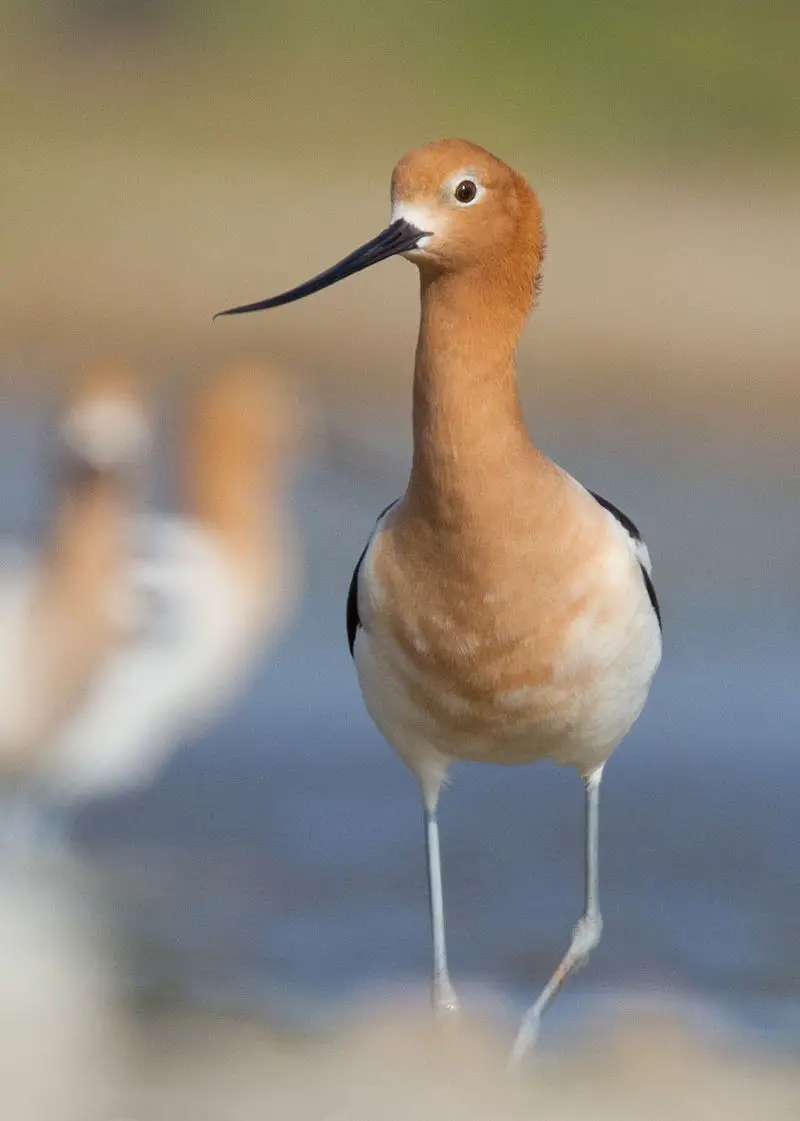
The American avocet is a stunningly beautiful bird found in North America. With its striking black and white plumage, long blue legs, and upturned bill it is an unmistakable sight.
It spends much of its time foraging around shallow water or mud flats searching for crustaceans and insects to feed on by sweeping its beak from side-to-side through the water.
The German naturalist Johann Friedr formally described this species back in 1789 as Recurvirostra americana – aptly named due to their habit of recurving their bills when feeding.
These graceful wading birds are truly a marvel of nature that deserve our admiration.Scientific classification:
| Kingdom | Animalia |
| Phylum | Chordata |
| Class | Aves |
| Order | Charadriiformes |
| Family | Recurvirostridae |
| Genus | Recurvirostra |
| Species | R. americana |
Also Featured In: Most Popular Bird Species in North America, Red Birds You’ll See in Oklahoma
5. American Coot
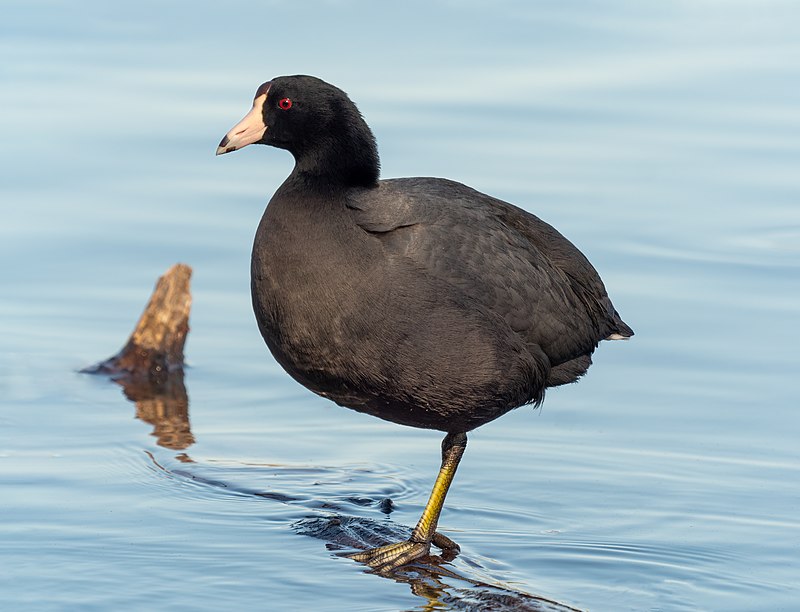
The American coot is a bird of the Rallidae family, commonly mistaken for ducks. However, they are only distantly related and have broad lobed scales on their lower legs and toes that fold back with each step to help them walk on dry land unlike ducks which have webbed feet.
Coots are omnivores who typically live in freshwater marshes, ponds and lakes but can also be found in brackish water habitats or even open oceans during migration season.
They feed mainly on algae and aquatic plants as well as small fish, snails, insects larvae and worms from time to time.
The males display territorial behaviour by chasing away intruders within their territory while females lay eggs mostly.
In floating nests made of vegetation near shorelines or islands among reeds where chicks hatch after about three weeks incubation period before swimming off into adulthood shortly afterwards at 10-12 weeks old.Scientific classification:
| Kingdom | Animalia |
| Phylum | Chordata |
| Class | Aves |
| Order | Gruiformes |
| Family | Rallidae |
| Genus | Fulica |
| Species | F. americana |
Also Featured In: Long Island Birds You Should Know, Swamps Birds You Should Know
6. Belted Kingfisher
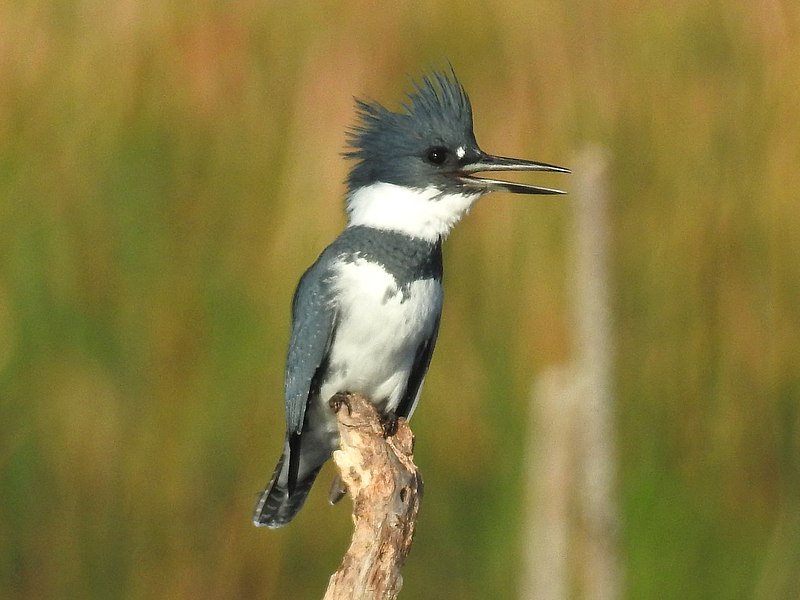
The belted kingfisher is a large, eye-catching bird native to North America. It belongs to the family Alcedinidae and has been divided into three subfamilies by recent research.
The species was first described in 1758 by Carl Linnaeus in his Systema Naturae.
This water Kingfisher stands out for its size as well as its striking plumage; males are bright blue on top with white below and females have rusty brown backs and wings with a thick black breast band across their chest.
They also possess an impressive call which can be heard from quite far away.
Belted kingfishers feed mainly on small fish but will sometimes also eat crustaceans, insects or even amphibians if they come across them while hunting around rivers or streams.
All in all, this is truly one remarkable bird that deserves our admiration.Scientific classification:
| Kingdom | Animalia |
| Phylum | Chordata |
| Class | Aves |
| Order | Coraciiformes |
| Family | Alcedinidae |
| Subfamily | Cerylinae |
| Genus | Megaceryle |
| Species | M. alcyon |
Also Featured In: Blue Birds You’ll Found around Us, New Hampshire Birds You Should Know
7. Mallard
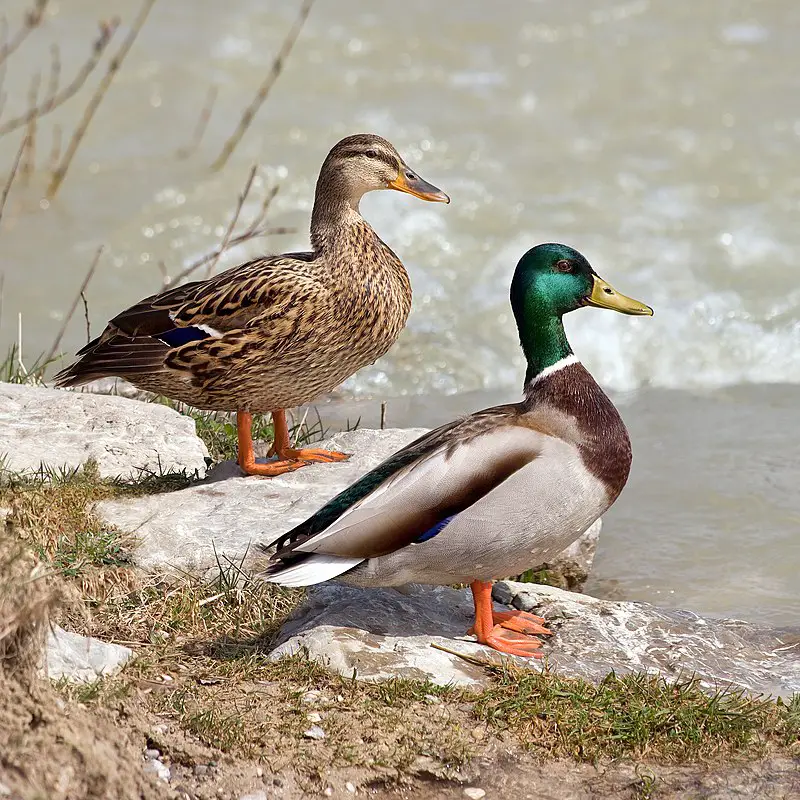
The Mallard is a species of dabbling duck that can be found living in temperate and subtropical regions across the Americas, Eurasia and North Africa.
It has been introduced to other areas such as New Zealand, Australia, Peru, Brazil and South Africa by humans.
This beautiful bird belongs to the Anatinae subfamily of waterfowl family Anatidae. The adult mallards have a glossy green head with white neck ring surrounding.
It along with brownish grey body feathers making them look stunning when they fly away or just sitting in their natural habitat around lakes or ponds.
They are excellent swimmers too due to webbed feet which helps them swim fast underwater while looking for food like aquatic insects etc.. Their loud quacking sound makes them quite popular among nature lovers.Scientific classification:
| Kingdom | Animalia |
| Phylum | Chordata |
| Class | Aves |
| Order | Anseriformes |
| Family | Anatidae |
| Genus | Anas |
| Species | A. platyrhynchos |
Also Featured In: Common Birds in the Cities, Most Common Nature Birds
8. Killdeer
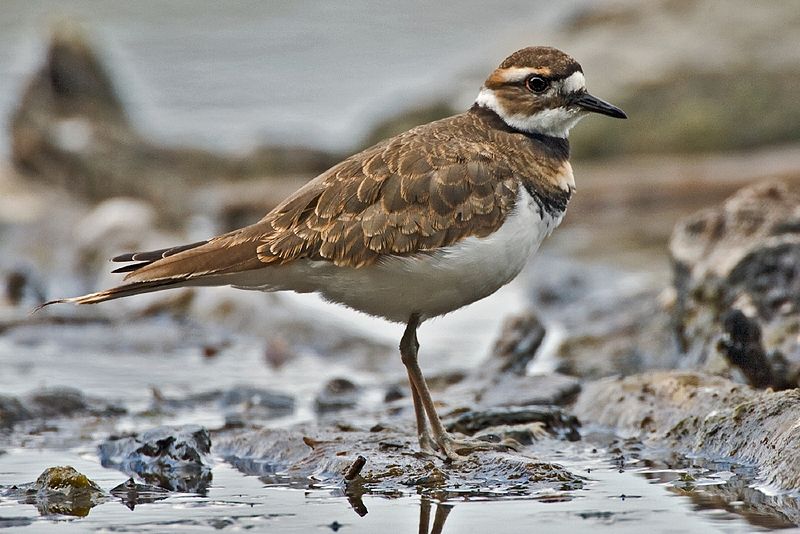
The Killdeer bird is a large plover found in the Americas. It has an unmistakable call which gives it its name, and boasts striking upperparts of brown with rufous fringes.
Its head features patches of white and black, while two distinctive bands adorn its neck – one black above, and one chestnut below.
The undersides are mostly white or pale buff-brown; their wings feature bright orange stripes when they take flight.
During breeding season males perform elaborate courtship rituals to attract females into establishing a pair bond; they also defend territories fiercely against other birds that encroach on them during this time.
In winter months some killdeers migrate southwards but many stay put throughout the cold weather too.
All in all these beautiful creatures provide us with quite a sight indeed.Scientific classification:
| Kingdom | Animalia |
| Phylum | Chordata |
| Class | Aves |
| Order | Charadriiformes |
| Family | Charadriidae |
| Genus | Charadrius |
| Species | C. vociferus |
Also Featured In: Birds that Live in San Francisco Bay Area, Common Birds of Houston
9. Osprey
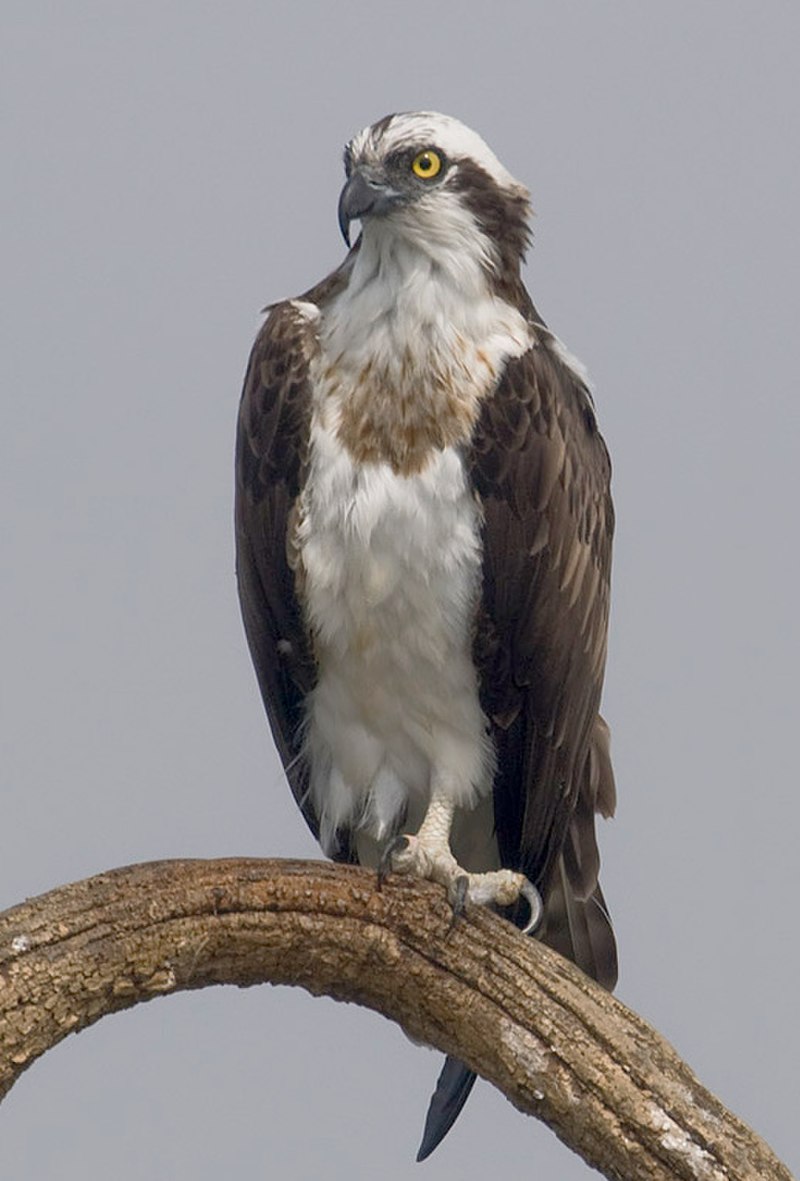
The Osprey is a majestic bird of prey with an incredibly wide habitat range. It has distinctive brown upperparts and greyish head and underparts, making it easily identifiable in the skies above many regions across the world.
With a wingspan of up to 180cm (71in) and body length reaching 60cm (24in), this large raptor specializes in hunting for fish, soaring high over rivers as well as coasts searching for its next meal.
Despite living near water sources, they can also be found inhabiting mountainsides or even woodlands, proving their incredible adaptability. An impressive species that truly deserves admiration.Scientific classification:
| Kingdom | Animalia |
| Phylum | Chordata |
| Class | Aves |
| Order | Accipitriformes |
| Family | Pandionidae |
| Genus | Pandion |
| Species | P. haliaetus |
Also Featured In: Birds of Sweden, Birds of Latvia
10. Black-Necked Stilt
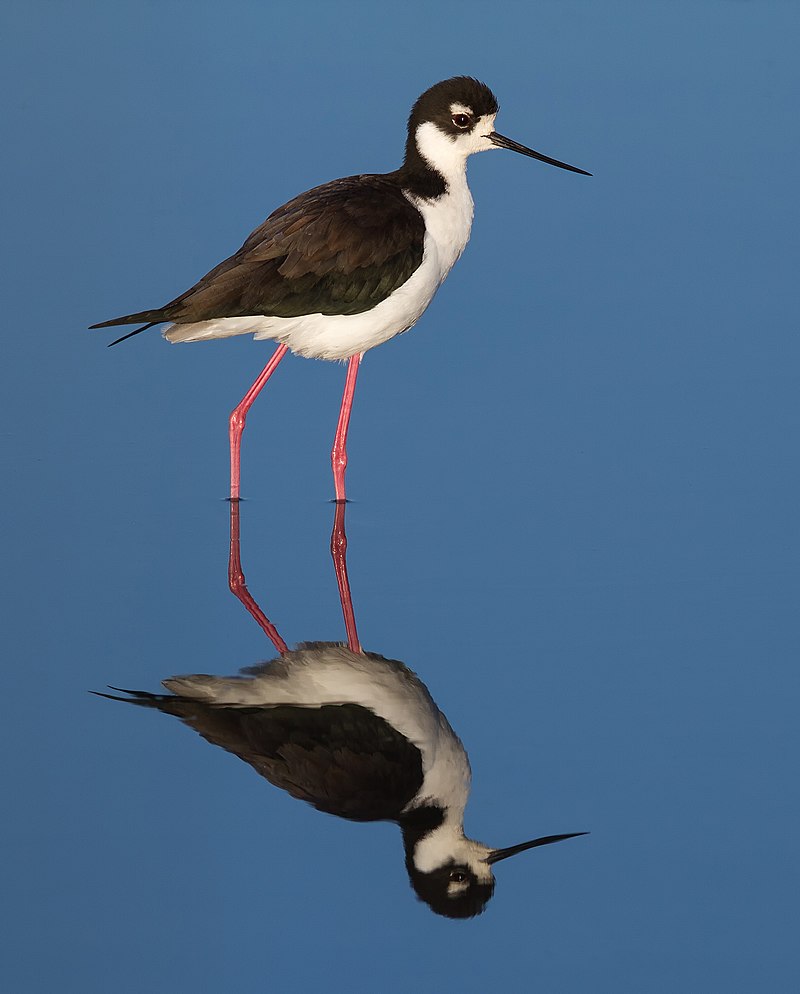
The Black-necked Stilt is an elegant shorebird that can be found from the coastal areas of California to Florida, then south through Central America and Brazil.
It has black upperparts contrasted by long white wings with a glossy sheen. Its striking red eyes are set against its white facial mask while its legs are bright pinkish in coloration.
The Haematopus mexicanus species inhabits marshy wetlands and brackish lagoons where it feeds on insects, crustaceans, small amphibians and fish which they catch using their slender bill or chase after them as they run across the surface of water or mudflats.
This bird typically nests near shallow waters but will use any habitat type if food resources are available nearby making it a highly adaptable species well suited for human altered habitats such as rice fields and sewage ponds.Scientific classification:
| Kingdom | Animalia |
| Phylum | Chordata |
| Class | Aves |
| Order | Charadriiformes |
| Family | Recurvirostridae |
| Genus | Himantopus |
| Species | H. mexicanus |
Also Featured In: Beautiful Brazilian Birds, Most Common Oahu Birds
11. Herons
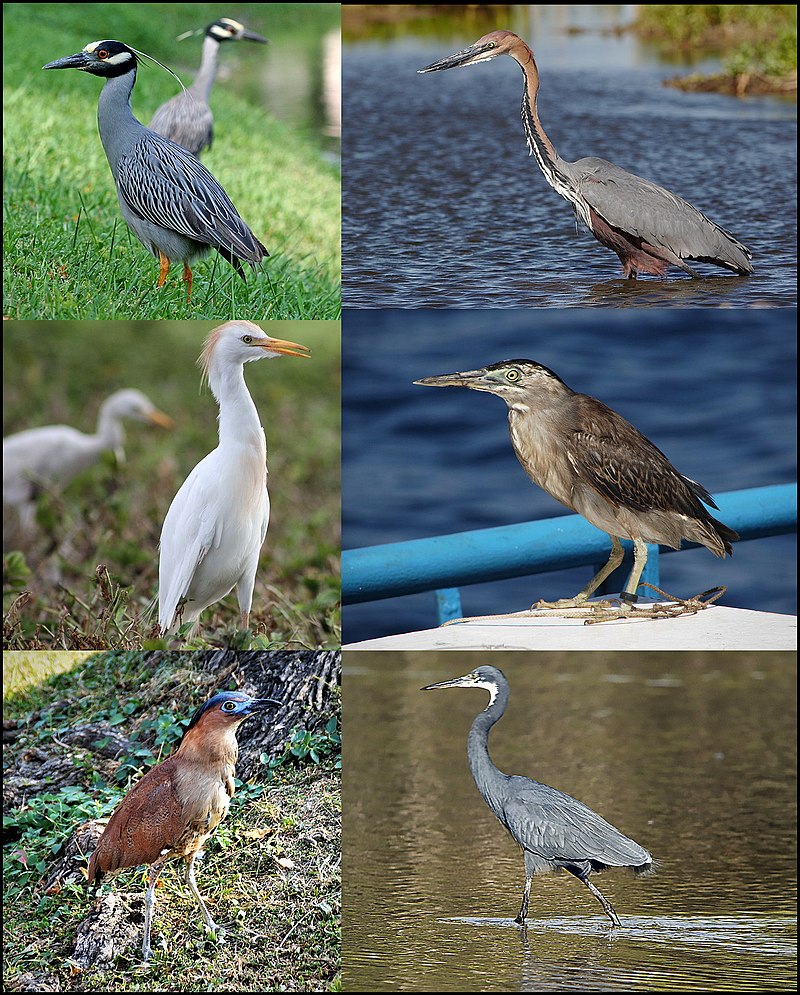
Herons are graceful and elegant birds belonging to the family Ardeidae, with 72 distinct species.
They have long legs and necks that are well-adapted for wading in shallow water like streams or ponds.
Herons can be found near freshwaters as well as along coastal areas worldwide.
Some of these species may also be referred to as egrets, bitterns or zigzag heron/bittern because they belong to certain genera such as Botaurus and Ixobrychus respectively.
These birds stand tall when searching for food by standing still in a shallow body of water while waiting patiently until prey appears before quickly capturing it with their sharp bills.Scientific classification:
| Kingdom | Animalia |
| Phylum | Chordata |
| Class | Aves |
| Order | Pelecaniformes |
| Suborder | Ardei |
| Family | Ardeidae Leach, 1820 |
Also Featured In: Most Common Types of Bangladeshi Birds, Famous Paintings Birds
12. Ducks
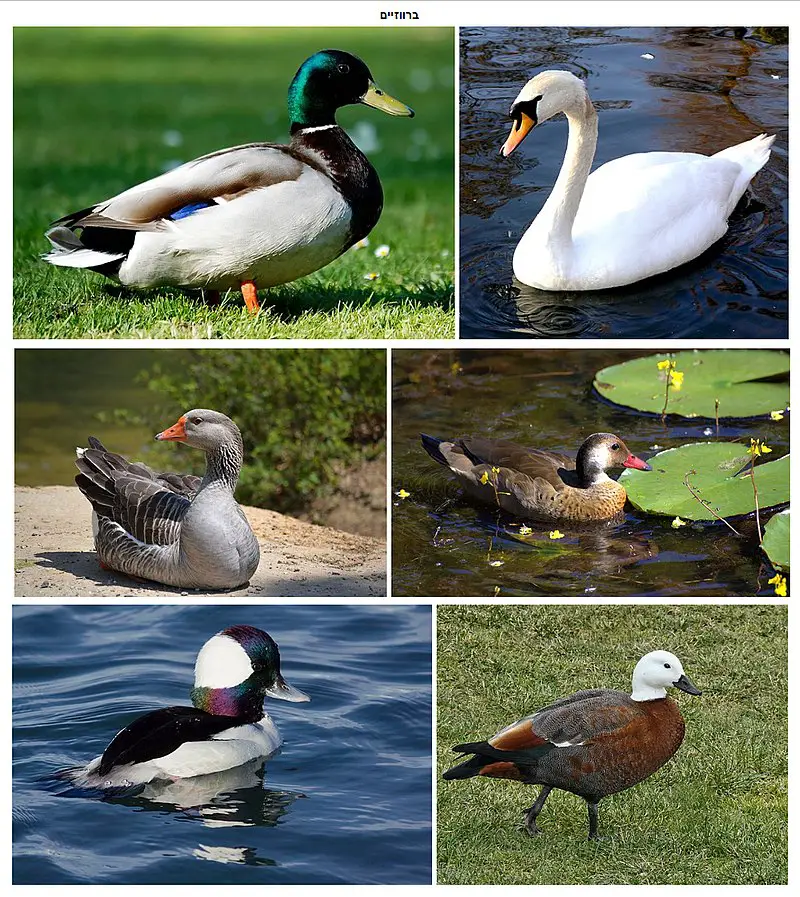
Ducks are water birds belonging to the family of Anatidae. They have a worldwide distribution except Antarctica and are highly adapted for swimming, floating on water surface or in shallow depths.
Ducks come in various sizes ranging from small teals to large swans with around 174 species found across 43 genera.
Their feathers make them waterproof enabling ducks to stay afloat even in stormy waters while their webbed feet allow them to swim gracefully underwater.
Ducks usually feed by filtering food items such as insects, molluscs and crustaceans through their bills but some also graze on land vegetation like grasses & grains depending upon availability of resources at different locations they inhabit.Scientific classification:
| Kingdom | Animalia |
| Phylum | Chordata |
| Class | Aves |
| Order | Anseriformes |
| Suborder | Anseres |
| Superfamily | Anatoidea |
| Family | Anatidae Leach, 1820 |
Also Featured In: Birds that Live in Croatia, Birds You’ll Find in Moldova
13. Pied-Billed Grebe
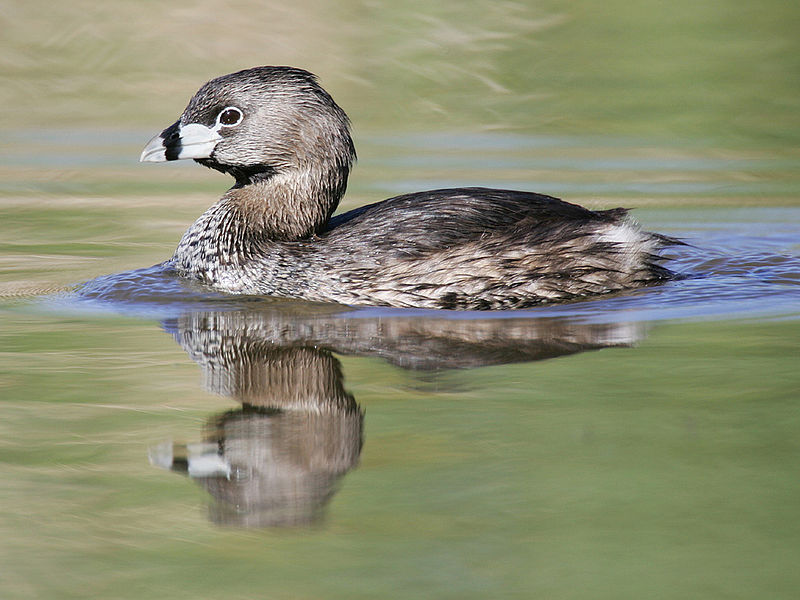
The Pied-billed Grebe is a water bird found in ponds throughout the Americas. It has earned many nicknames, including American dabchick, rail, and Carolina grebe.
This species of grebe can be recognized by its distinctive bill which is pied or mottled with black and white markings.
Its brownish body is also covered in dark spots as well as having long legs for swimming underwater to catch food such as aquatic insects and crustaceans.
The Pied-billed Grebes are monogamous birds that pair up during breeding season from spring to summer where they build their nests together on vegetation near the shoreline of lakes or slow moving rivers.
These birds are solitary outside of mating season but will form small flocks when migrating south for winter months.Scientific classification:
| Kingdom | Animalia |
| Phylum | Chordata |
| Class | Aves |
| Order | Podicipediformes |
| Family | Podicipedidae |
| Genus | Podilymbus |
| Species | P. podiceps |
Also Featured In: Top Birds Found in Mexico, Birds in Calgary You’ll Love to See
14. Green Heron
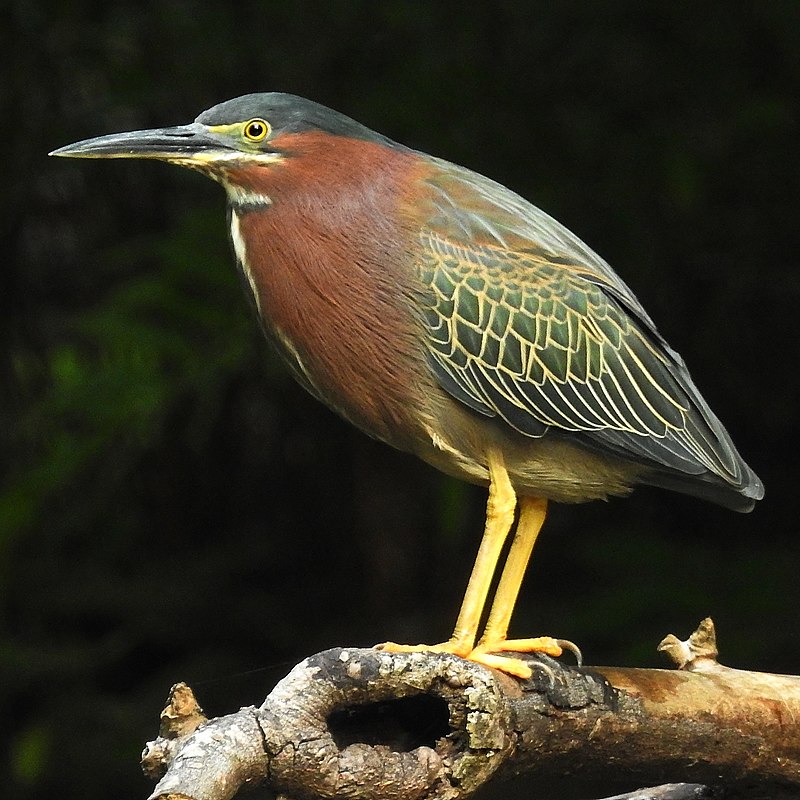
The Green Heron (Butorides virescens) is a small heron found throughout North and Central America.
It’s scientific name comes from Middle English ‘butor’ meaning bittern, combined with the Latin term for its distinctive greenish color – ‘virescens’.
For many years it was considered to be part of the same species as the Striated Heron (Butorides striata), commonly referred to as “green-backed herons”.
The nominate subspecies inhabits wetlands across much of this range, where they can be spotted stalking about in shallow water looking for fish or frogs on which to feed.
They are fascinating wading birds that have even been known to use tools such as sticks or baited lines when fishing.Scientific classification:
| Kingdom | Animalia |
| Phylum | Chordata |
| Class | Aves |
| Order | Pelecaniformes |
| Family | Ardeidae |
| Genus | Butorides |
| Species | B. virescens |
Also Featured In: Birds that You’ll Find in Puerto Rico, Green Birds Commonly Found in Florida
15. American White Ibis
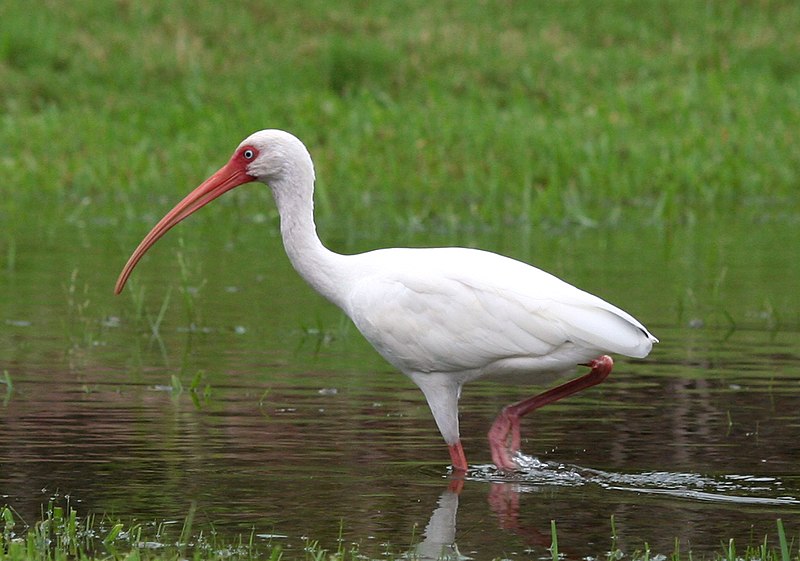
The American white ibis is a medium-sized bird with an overall white plumage and long legs. It has a bright red-orange downward curved bill, and black wing tips that are usually only visible in flight.
This species of ibis can be found from Virginia south through most of the coastal New World tropics.
They have been known to inhabit marshes, swamps, ponds, lakeshores as well as mangrove forests near water sources where they feed on crustaceans such as crabs and shrimp among other aquatic animals like insects or snails.
The American white ibis plays an important role in its ecosystem by helping to control insect populations which helps maintain balance within these environments.Scientific classification:
| Kingdom | Animalia |
| Phylum | Chordata |
| Class | Aves |
| Order | Pelecaniformes |
| Family | Threskiornithidae |
| Genus | Eudocimus |
| Species | E. albus |
Also Featured In: Big Birds that Live in New Jersey, Red Birds You’ll Commonly Found in Texas
16. Marbled Godwit
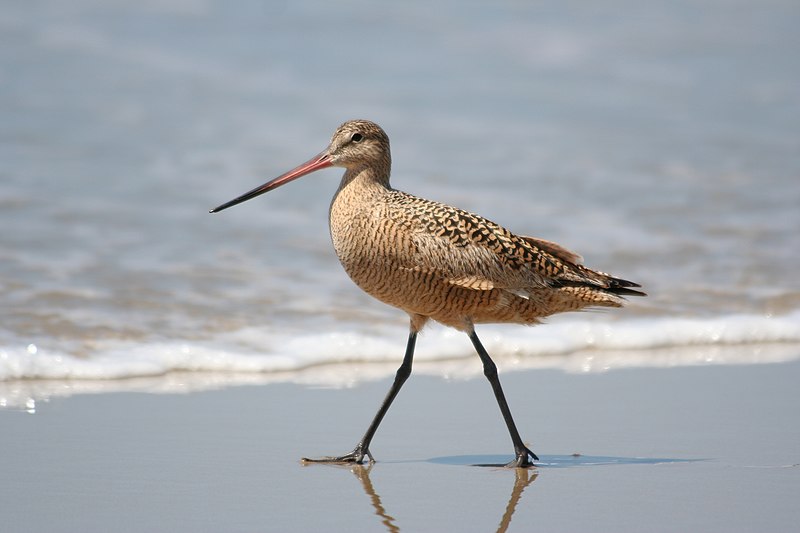
The Marbled Godwit is a large migratory shorebird in the Scolopacidae family and is one of the largest species amongst four godwits.
It was first described by English naturalist George Edwards in 1750, as ‘The Greater American Godwit’.
The bird has long legs and bill for probing mudflats for food. Their plumage varies from mottled gray to reddish or brown on their upperparts, with white underparts that contrast against it.
During breeding season they can be seen along northern prairies in North America and migrate south towards Mexico during winter months.
They are omnivorous feeders but prefer aquatic insects like crustaceans, larvae etc., which makes them an important element of wetland ecosystems across its range.Scientific classification:
| Kingdom | Animalia |
| Phylum | Chordata |
| Class | Aves |
| Order | Charadriiformes |
| Family | Scolopacidae |
| Genus | Limosa |
| Species | L. fedoa |
Also Featured In: Birds Live Near San Diego, Most Common Oaxaca Birds
17. Little Blue Heron
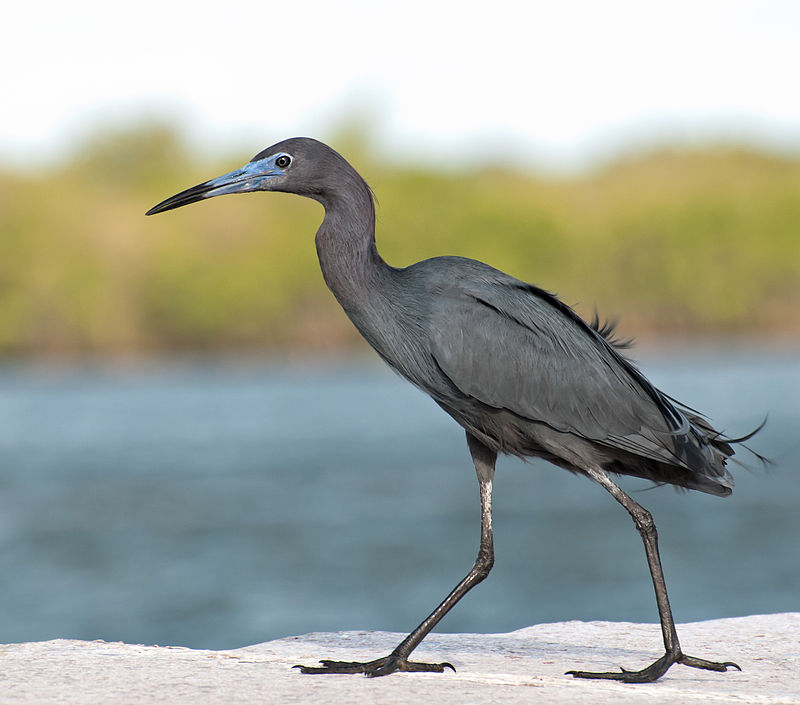
The Little Blue Heron is a small, darkly-colored heron with two-toned bill. Juveniles are completely white, similar to the Snowy Egret. In breeding season, adults develop unique coloration on their head and legs.
The bird has an expansive habitat range that covers much of the Americas from North America all the way down to South America.
They feed mostly in shallow water areas like tidal flats or marshes and eat small aquatic animals such as fish, frogs and crustaceans.
This species can also be found along coastal regions where they gather at night for roosting purposes during winter months when food sources become more scarce due to migration patterns of its prey animals.
These birds have adapted well over time allowing them to persist in most habitats throughout their wide range even despite environmental changes caused by human activities such as pollution or development projects near wetlands ecosystems which are essential for this species’ survival.Scientific classification:
| Kingdom | Animalia |
| Phylum | Chordata |
| Class | Aves |
| Order | Pelecaniformes |
| Family | Ardeidae |
| Genus | Egretta |
| Species | E. caerulea |
Also Featured In: Puerto Vallarta Birds You Should Know, Blue Birds that You’ll Find in Utah
18. Grebes
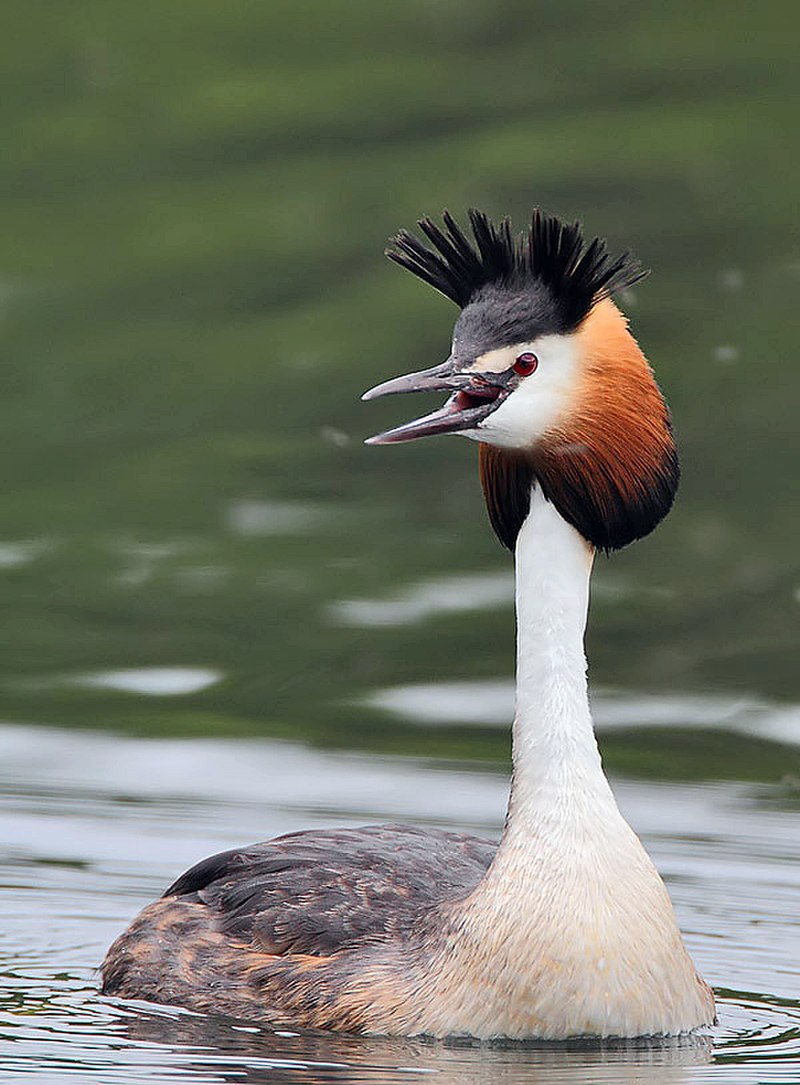
Grebes are a type of diving bird found in freshwater habitats around the world. They belong to the order Podicipediformes and have 22 species that exist across six genera.
Some species can also be found in marine environments during their migration or winter season, and some even live flightless lives on stable lakes.
Grebes vary greatly between regions; for example, they range from 4-32 inches long with anywhere from 8-30 ounces of weight depending on which species it is.
Their plumage may be black, browns/grays or whites but usually consist of bright colors such as yellows, blues and greens while underwater they use these feathers to help them streamline through the water quickly.Scientific classification:
| Kingdom | Animalia |
| Phylum | Chordata |
| Class | Aves |
| Clade | Neoaves |
| Clade | Mirandornithes |
| Order | Podicipediformes Fürbringer, 1888 |
| Family | Podicipedidae Bonaparte, 1831 |
Also Featured In: Common Birds in Japan, Birds That Live in Iraq
19. Ibis
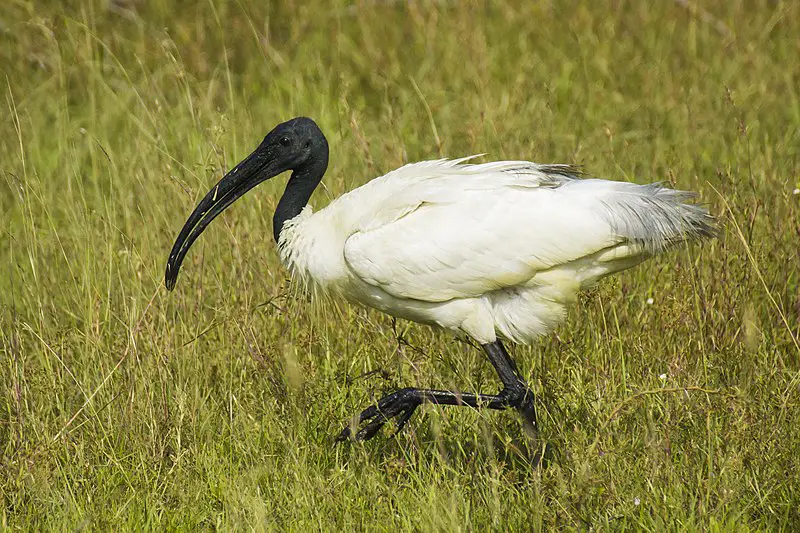
Ibis is a type of long-legged wading bird belonging to the family Threskiornithidae. They inhabit wetlands, forests and plains across many parts of the world.
The name ibis comes from Latin and Ancient Greek words for this group of birds which also can be found in scientific names like Bubulcus ibis – mistakenly identified as bovine animal in 1757.
Ibises have characteristically curved bills used to capture food items such as fishes, reptiles or frogs while they are searching through mud or shallow water with their feet.
Furthermore, these birds usually live in large flocks which helps them protect themselves against predators by keeping an eye out on each other’s safety during hunting times.Scientific classification:
| Kingdom | Animalia |
| Phylum | Chordata |
| Class | Aves |
| Order | Pelecaniformes |
| Family | Threskiornithidae |
| Subfamily | Threskiornithinae Poche, 1904 |
Also Featured In: Egyptian Birds, Flight Birds You Should Know
20. Eurasian Teal
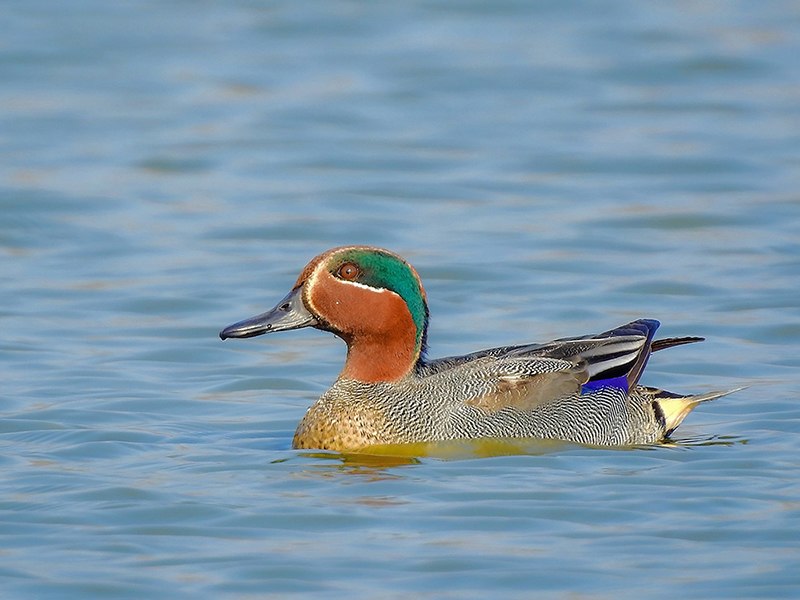
The Eurasian teal, also known as the common teal or the Eurasian green-winged teal, is a small dabbling duck that inhabits temperate Europe and Asia.
It has an unmistakable blue-green colouring which gives it its name.
During winter months they migrate south in large flocks to areas with warmer climates where there is more food available for them to feed on.
The Eurasian Teals are highly social birds; they often congregate in groups of hundreds or even thousands during migration periods.
They mostly feed on aquatic vegetation such as grasses and weeds but will occasionally hunt insects too.
These ducks make beautiful sights when flying over lakes or streams, their wings producing a distinctive whistling sound while they glide across the sky.Scientific classification:
| Kingdom | Animalia |
| Phylum | Chordata |
| Class | Aves |
| Order | Anseriformes |
| Family | Anatidae |
| Genus | Anas |
| Species | A. crecca |
Also Featured In: Birds of United Kingdom, British Columbian Birds
21. Great Egret

The Great Egret is a large, white bird found in many regions of the world. It has four subspecies that reside across Asia, Africa, Americas and southern Europe.
This species usually lives near bodies of water such as lakes and marshes. They are also now starting to spread into more northern areas of Europe due to climate change.
These birds have long yellow legs with an impressive wingspan for their size which allows them to soar majestically through the sky hunting for fish or amphibians in shallow waters below.
Their feathers have been used historically by Native Americans as part of traditional garments or ceremonies but this practice should be avoided today so these amazing creatures can thrive without harm from humans.Scientific classification:
| Kingdom | Animalia |
| Phylum | Chordata |
| Class | Aves |
| Order | Pelecaniformes |
| Family | Ardeidae |
| Genus | Ardea |
| Species | A. alba |
Also Featured In: Most common Birds in France, Most Common Romanian Birds
22. Rail
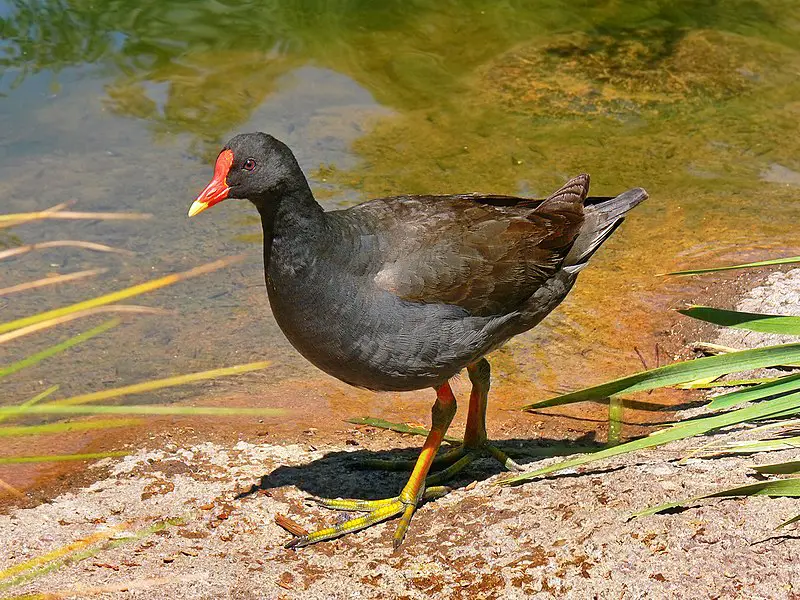
Rails are a diverse family of birds, ranging from small to medium size and living in habitats across the world.
They can be found around wetlands, as well as any other land-based environment except for dry deserts, polar regions or areas with persistent snow cover.
These ground-dwellers have short legs and long toes that help them maneuver through wetland vegetation easily.
Tey typically feed on insects and aquatic invertebrates but will also eat seeds and berries when available.
Species such as coots, crakes and gallinules have evolved different bill shapes to allow them to navigate their environments more efficiently while searching for food.
Rails live both alone or in pairs depending on the species; some migrate seasonally while others remain at one location year round.Scientific classification:
| Kingdom | Animalia |
| Phylum | Chordata |
| Class | Aves |
| Order | Gruiformes |
| Family | Rallidae Rafinesque, 1815 |
Also Featured In: Italian Birds You Should Know, Common Denmark Birds
23. Stork
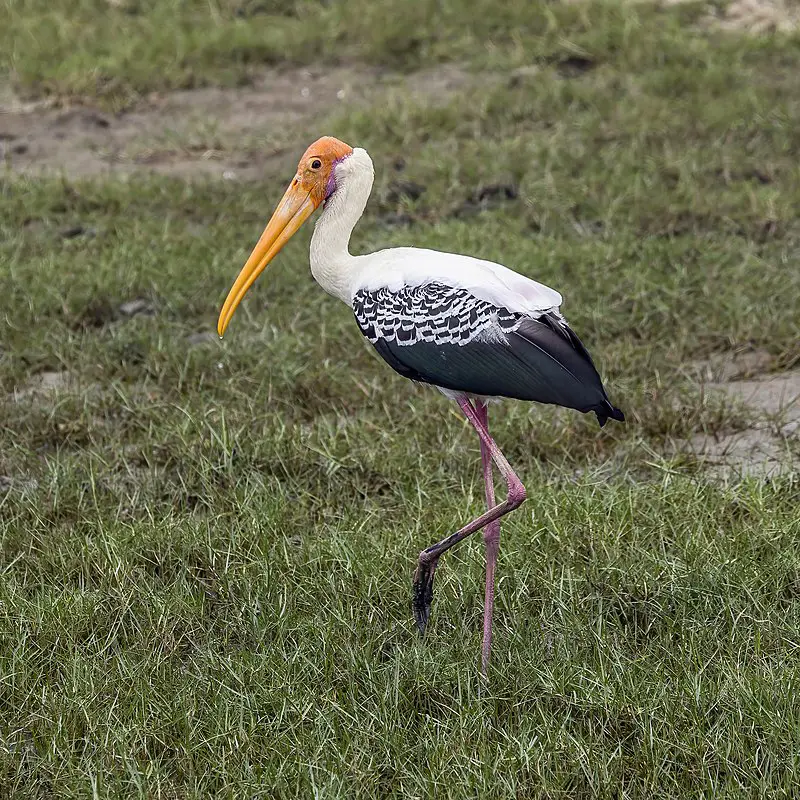
Storks are majestic birds, easily recognizable with their long necks and legs. They belong to the family Ciconiidae, making up the order Ciconiiformes.
Storks inhabit many areas around the world but generally prefer drier habitats than other wading birds like herons or ibises which have been moved to separate orders.
Despite being large in size they can be quite graceful in flight as well as when hunting for food such as insects, small mammals and reptiles near shallow waters.
During nesting season stork pairs build nests on high trees or platforms made of sticks and twigs where they lay eggs that hatch after about a month of incubation time by both parents taking turns sitting on them warmly until hatching day.Scientific classification:
| Kingdom | Animalia |
| Phylum | Chordata |
| Class | Aves |
| Clade | Aequornithes |
| Order | Ciconiiformes Bonaparte, 1854[1] |
| Family | Ciconiidae J. E. Gray, 1840[1] |
Also Featured In: Native South Korean Birds, Bulgarian Birds
24. Great Blue Heron

The Great Blue Heron is a majestic wading bird found in many parts of North America, Central America, the Caribbean and even as far away as the Galapagos Islands.
It has an impressive wingspan which can reach up to six feet wide. Its feathers are mainly bluish-gray with brownish streaks on both its neck and chest while its head displays white plumes.
The adult herons can also be identified by their yellow bill and legs.
They live near bodies of water such as lakes, marshes or rivers where they feed on fish using a spear like motion with their sharp bills.
An all-white population exists only in south Florida and the Florida Keys making it quite unique.Scientific classification:
| Kingdom | Animalia |
| Phylum | Chordata |
| Class | Aves |
| Order | Pelecaniformes |
| Family | Ardeidae |
| Genus | Ardea |
| Species | A. herodias |
Also Featured In: Common Birds in Canada, Birds that Live in the Deserts
25. Song Sparrow

The Song Sparrow (Melospiza melodia) is a small, yet abundant bird found in North America.
They have brown upperparts with dark streaks and are white underneath, complete with a distinct dark brown spot on the breast.
Their cap is also brown and long roughed feathers can be seen sprouting from their neck area.
This sparrow species is highly variable and adaptable to many different environments including dry brush land, wetlands or open fields.
It has been noted that adult song sparrows will sing even during winter months when other birds remain quiet.
These energetic little animals make for great backyard companions as they flit about singing their lovely melodies.Scientific classification:
| Kingdom | Animalia |
| Phylum | Chordata |
| Class | Aves |
| Order | Passeriformes |
| Family | Passerellidae |
| Genus | Melospiza |
| Species | M. melodia |
Also Featured In: Birds That Live around Seattle, Birds that Migrate through Illinois in the Spring
26. Black-Crowned Night Heron
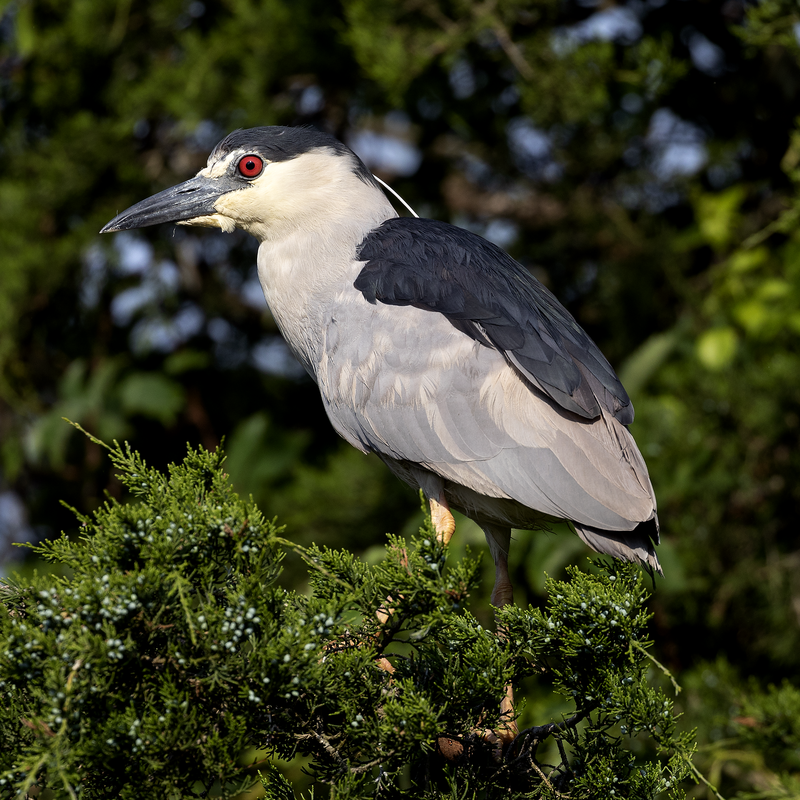
The Black-crowned night heron (Nycticorax nycticorax) is a medium-sized bird found in various parts of the world, including Europe, Asia and North and South America.
It has black crowns on its head with white feathers underneath. Its wings are greyish brown while its underparts are mostly white.
This species can be seen foraging near shallow water or along coastlines during dusk or dawn as it hunts small fish, amphibians and crustaceans.
They also feed on insects such as grasshoppers and beetles which they find in meadows close to freshwater bodies like lakes or ponds where they breed during springtime making nests using twigs lined with reeds and leaves near these waterside habitats.
In Australasia, this species hybridizes with the nankeen night heron that inhabits those areas instead; however both populations remain distinct from each other despite their overlap range regions.Scientific classification:
| Kingdom | Animalia |
| Phylum | Chordata |
| Class | Aves |
| Order | Pelecaniformes |
| Family | Ardeidae |
| Genus | Nycticorax |
| Species | N. nycticorax |
Also Featured In: Common Birds Found in Switzerland, Urban Birds of Hong Kong
27. Black-Bellied Whistling Duck
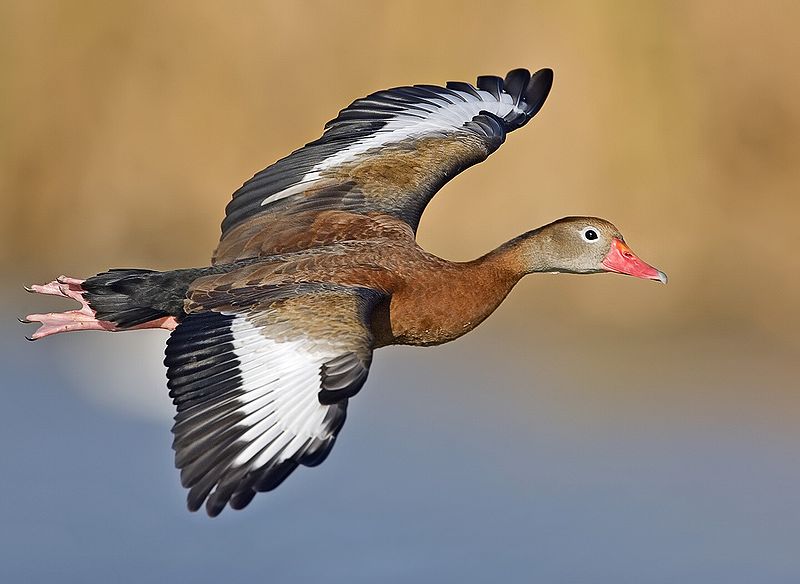
The Black-bellied whistling duck is a unique species of bird that can be found in the southern United States, Mexico, Central and South America. This small waterfowl has distinct black plumage on its belly which gives it its name.
Its call is also distinctive as it makes high pitched whistles to communicate with other members of its flock.
It prefers wetland habitats such as marshes, ponds and lakes where they feed on seeds and aquatic plants like wild rice or pondweed.
During breeding season these birds form monogamous pairs nesting in trees near bodies of water.
They are migratory birds but some may remain year round depending upon local climate conditions making them relatively common sights in certain areas during winter months when most other ducks have migrated further south for warmer weather.Scientific classification:
| Kingdom | Animalia |
| Phylum | Chordata |
| Class | Aves |
| Order | Anseriformes |
| Family | Anatidae |
| Genus | Dendrocygna |
| Species | D. autumnalis |
Also Featured In: El Salvador Birds, Native Birds in Lower Rio Grande Valley
28. Wood Stork
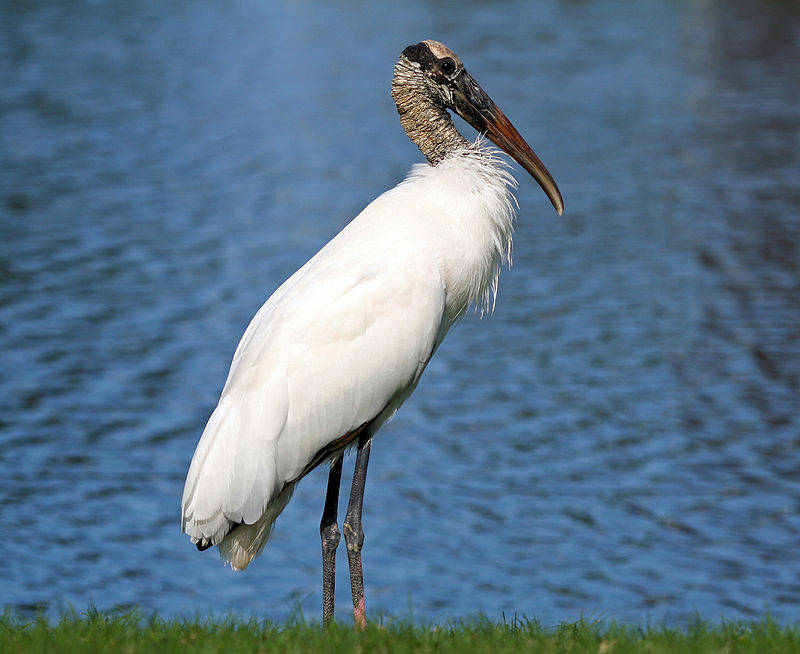
The Wood Stork is a large wading bird found in subtropical and tropical habitats throughout the Americas, including the Caribbean. It stands out from other storks due to its distinctive white head and neck feathers.
The wood stork has an impressive wingspan of up to 6 feet wide, making it one of the largest birds in North America.
Although usually seen near water sources such as swamps or wetlands looking for food like fish, crabs, frogs and even small reptiles they can sometimes be spotted far away from their natural habitat during migration season.
This species is also one of few that breeds annually in North America with nests typically built on platforms made by humans or animals near water bodies or ponds.Scientific classification:
| Kingdom | Animalia |
| Phylum | Chordata |
| Class | Aves |
| Order | Ciconiiformes |
| Family | Ciconiidae |
| Genus | Mycteria |
| Species | M. americana |
Also Featured In: Georgia Birds, Autumn Birds You Should Know
29. Snowy Egret
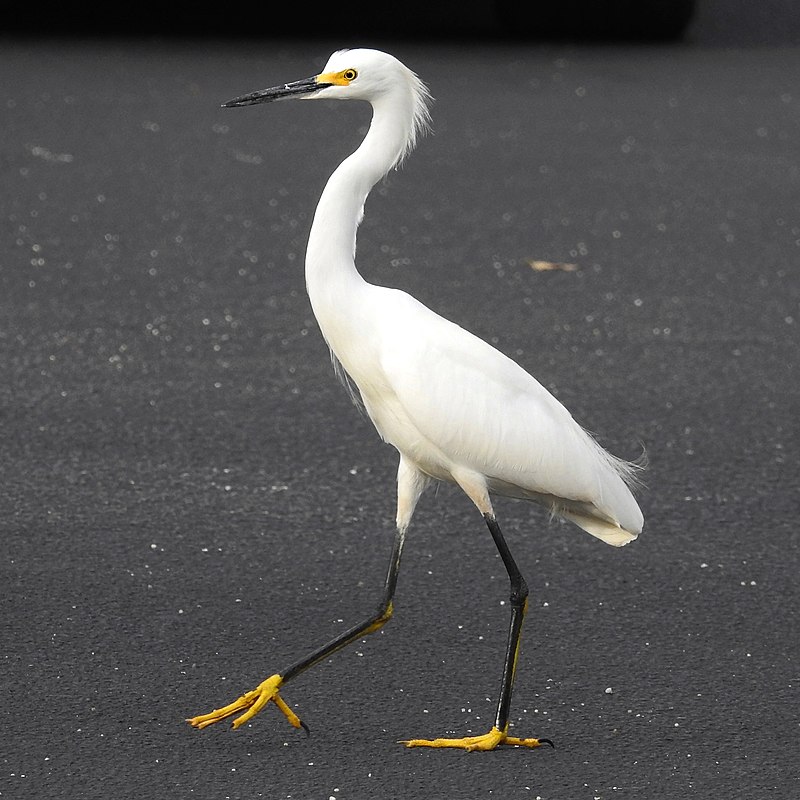
The Snowy Egret is a small white heron native to North America. Its scientific name, Egretta thula, comes from Provençal French for the little egret and an incorrect reference to the Black-necked Swan by Chilean naturalist Juan Ignacio Molina in 1782.
This beautiful bird has black legs with yellow feet, and a long plume of feathers on its head that often appears as if it’s wearing a crown.
It feeds primarily on insects and aquatic life like fish or frogs making it well adapted for both wetland habitats such as marshes or swamps plus coastal areas close to shorelines.
With their graceful movements they are truly delightful creatures to observe while out exploring nature.Scientific classification:
| Kingdom | Animalia |
| Phylum | Chordata |
| Class | Aves |
| Order | Pelecaniformes |
| Family | Ardeidae |
| Genus | Egretta |
| Species | E. thula |
Also Featured In: Trinidad and Tobago birds, Large Birds Live in Idaho
30. Least Bittern
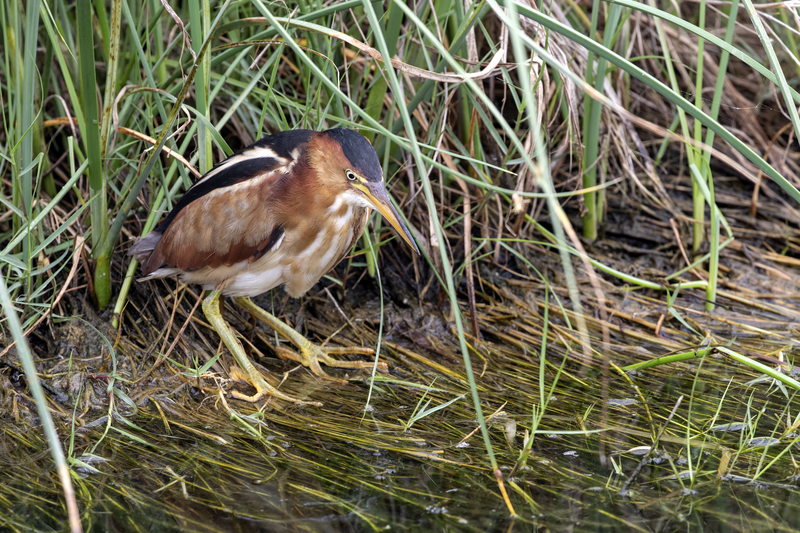
The Least Bittern is a small heron, the smallest of its family Ardeidae. It was first described by German naturalist Johann Friedrich Gmelin in 1789 and placed it with other herons, cranes, storks and bitterns into genus Ardea.
It can be found across much of North America to Central America as well as South American countries like Argentina, Uruguay and Brazil.
Its plumage varies from yellowish brown above to white below. The wings are short but pointed allowing for agile flight even over dense vegetation or water bodies where they migrate during breeding season.
They feed on fish, amphibians insects, crustaceans etc which makes them great hunters near shallow waters or marshes.
Least bitterns build their nests within reeds making them hard to spot while protecting them against predators at the same time providing safety for their eggs & young ones.Scientific classification:
| Kingdom | Animalia |
| Phylum | Chordata |
| Class | Aves |
| Order | Pelecaniformes |
| Family | Ardeidae |
| Genus | Ixobrychus |
| Species | I. exilis |
Also Featured In: Small Birds Live in Vermont, Yellow Birds of Missouri
31. Clapper Rail
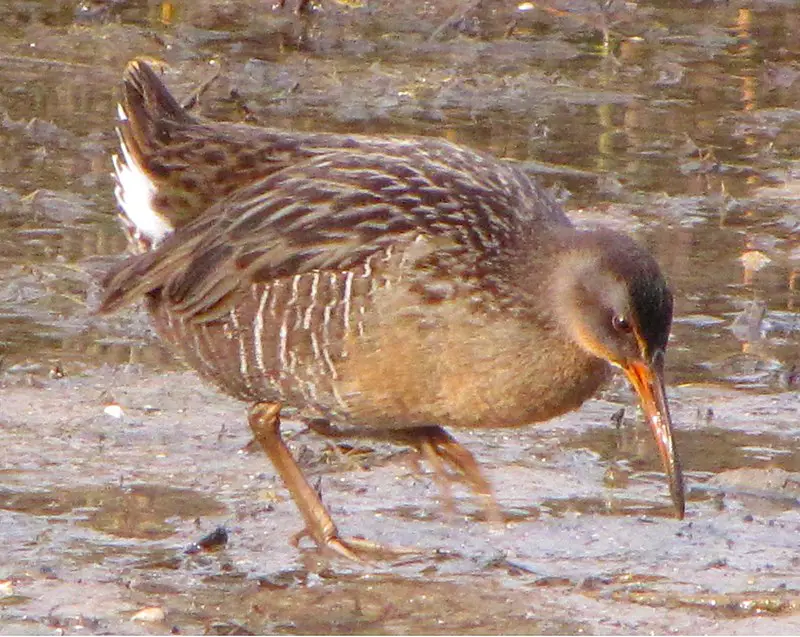
The Clapper Rail is a large, brown bird that belongs to the Rallidae family. It is found in wetlands along the eastern coast of America, Mexico and some Caribbean Islands.
This species was once considered to be related to Mangrove Rails but recent taxonomic studies have shown otherwise.
They are quite vocal with their loud calls which sound like someone clapping two stones together hence its name ‘Clapper’.
These birds feed on small crabs, fishes and insects in coastal marshes and swamps making them an important part of wetland ecosystems.
In order for these birds to thrive actions should be taken by governments such as restoring habitats or creating new ones so they can carry out their activities without any disturbance from humans or predators.Scientific classification:
| Kingdom | Animalia |
| Phylum | Chordata |
| Class | Aves |
| Order | Gruiformes |
| Family | Rallidae |
| Genus | Rallus |
| Species | R. crepitans |
Also Featured In: Saint Kitts & Nevis birds, Birds that Live in Newfoundland and Labrador
32. Yellow-Crowned Night Heron
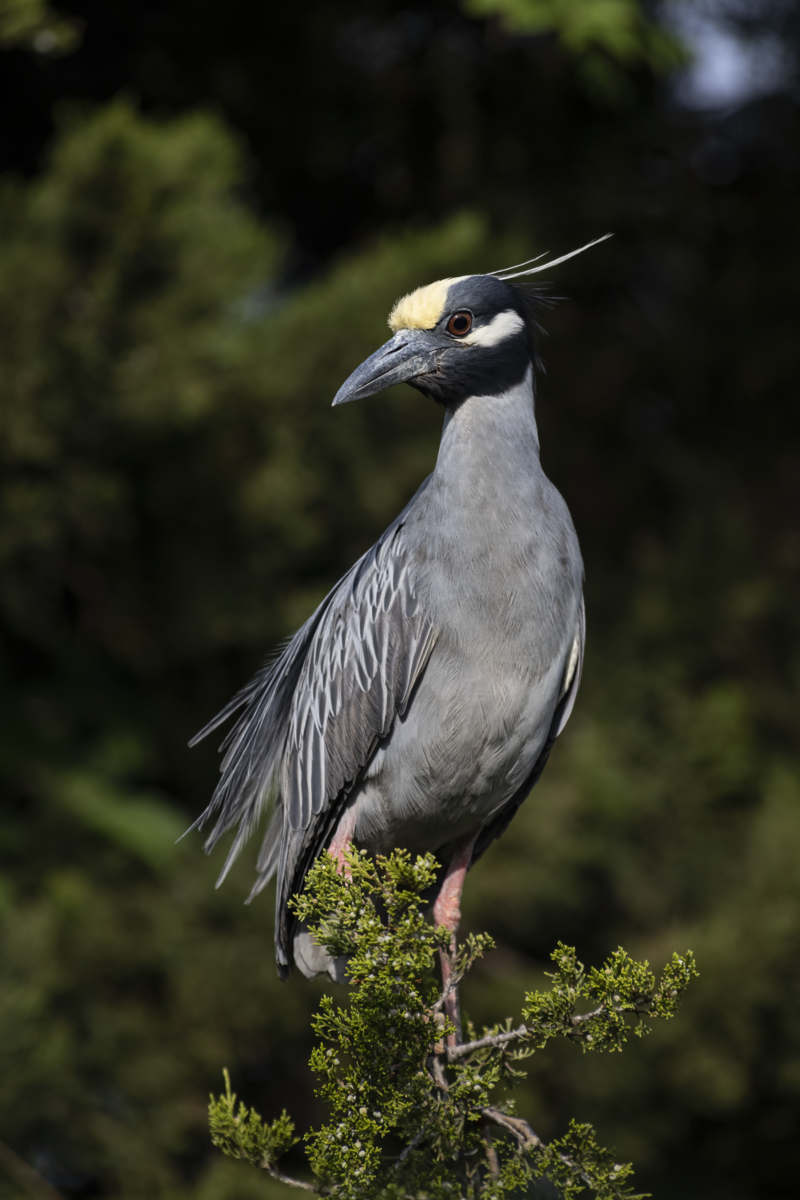
The Yellow-crowned night heron is a beautiful and unique species of bird native to the Americas. It has distinctive yellow crowns on its head, making it easy to identify among other herons.
These birds are also larger than most other types of herons, reaching up to 70 cm in length and 850 g in weight.
They usually feed on small fish or crustaceans while wading through shallow waters with their long legs.
The yellow-crowned night heron can be found near marshes or lakes during breeding season when they will build nests made from twigs high above the ground for protection against predators like raccoons and foxes.
This majestic bird is an important part of wetland ecosystems as it helps keep populations of smaller aquatic animals balanced by preying upon them.Scientific classification:
| Kingdom | Animalia |
| Phylum | Chordata |
| Class | Aves |
| Order | Pelecaniformes |
| Family | Ardeidae |
| Genus | Nyctanassa |
| Species | N. violacea |
Also Featured In: Bermuda birds, Yellow Birds of Oklahoma
33. Common Gallinule
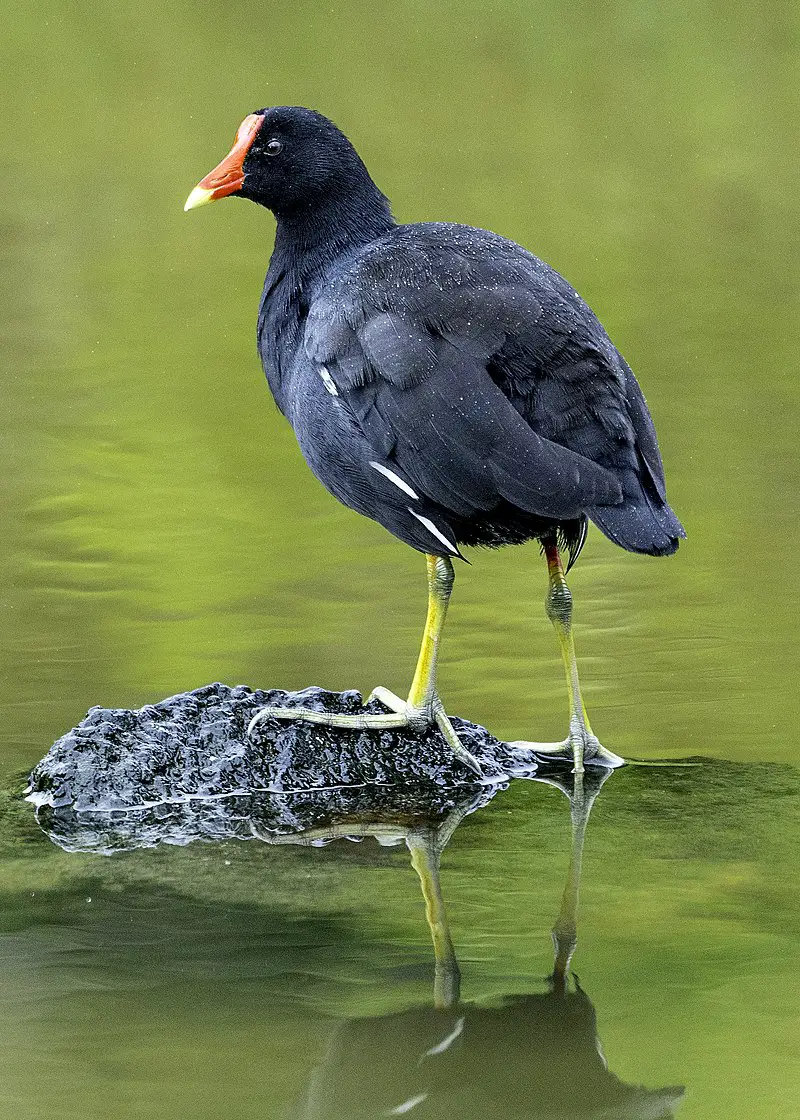
The Common Gallinule is a bird of the Rallidae family, native to parts of the Americas. It can be found in marshes, ponds and other wetland habitats which are well-vegetated.
This species prefers temperate climates and is not generally seen in polar regions or rainforests.
It has mainly greyish plumage with black wings and tail feathers, while its head has orange markings on either side along with an orange bill and yellow legs.
The underside usually appears white when flying but may have buffy undertones during breeding season.
Its diet consists primarily of aquatic vegetation as well as small invertebrates such as insects, snails or tadpoles; sometimes it will also take grains from fields nearby wetlands if available.
The Common Gallinule’s main call is a loud “kuk-kaa-kow” sound that can often be heard echoing across these areas where they reside.Scientific classification:
| Kingdom | Animalia |
| Phylum | Chordata |
| Class | Aves |
| Order | Gruiformes |
| Family | Rallidae |
| Genus | Gallinula |
| Species | G. galeata |
Also Featured In: Caribbean Birds, Most Common Birds Found in Nayarit
34. Franklin’s Gull
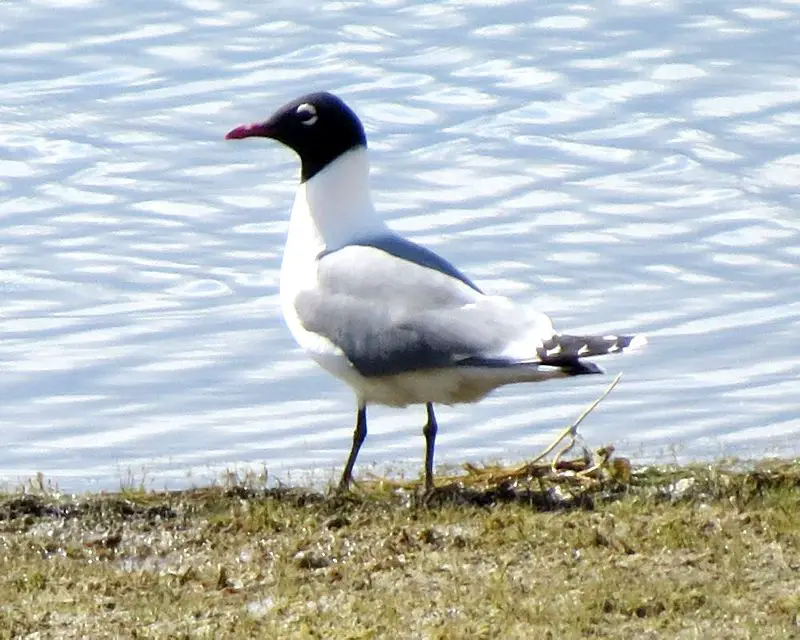
Franklin’s gull is a small species of seagull that breeds in the central provinces of Canada and certain states in the north of the United States. During winter, they migrate to Argentina, Caribbean islands and other parts further south.
The Franklin’s Gull has an average length between 32-36 cm with white head plumage and darker grey wings.
Its genus name Leucophaeus derives from Ancient Greek leukos meaning ‘white’ and phaios for ‘dusky’ while its specific pipixcan comes from a Nahuatl word for ‘gull’.
In addition to their striking appearance, these birds are also known for their distinct call which sounds like laughing or crying.Scientific classification:
| Kingdom | Animalia |
| Phylum | Chordata |
| Class | Aves |
| Order | Charadriiformes |
| Family | Laridae |
| Genus | Leucophaeus |
| Species | L. pipixcan |
Also Featured In: Gulls Species, Common Southern Californian Birds
35. American Bittern
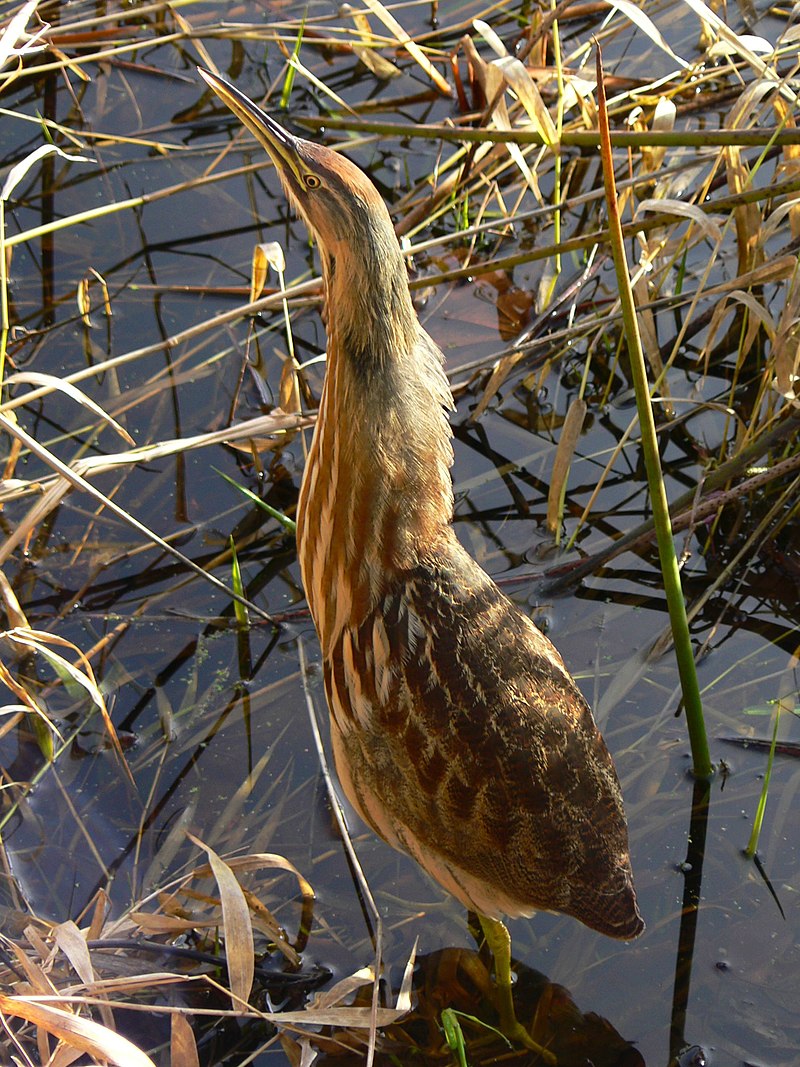
The American Bittern is a solitary, brown wading bird from the heron family. It lives in North America and Central America, breeding in Canada and northern parts of the United States before migrating south to winter on the states surrounding the Gulf Coast as well as Florida’s Everglades.
Not only does it blend into its surroundings thanks to its muted coloring but it also has a unique call that helps keep it hidden – an “un-ducklike” booming sound that can travel long distances due to low frequency vibrations.
The bittern spends most of their time alone but during mating season they become more social while gathering together at wetlands for courtship activities such as displaying with feathers erect or head bobbing.Scientific classification:
| Kingdom | Animalia |
| Phylum | Chordata |
| Class | Aves |
| Order | Pelecaniformes |
| Family | Ardeidae |
| Genus | Botaurus |
| Species | B. lentiginosus |
Also Featured In: Herons Species, Birds That Live in Colorado
36. Double-Crested Cormorant

The double-crested cormorant is a majestic bird with an impressive wingspan, found across North America from the Aleutian Islands all the way down to Mexico.
Its black plumage stands out against its bright orange-yellow facial skin and some extended patches of white feathers on each side of its throat.
It measures between 28 – 35 inches in length and has webbed feet that enable it to swim gracefully through rivers and lakes, as well as coastal areas.
These birds are known for their voracious appetite for fish, sometimes diving over 100 ft deep into water looking for food.
Despite this reputation they also feed on crustaceans, amphibians and insects when available.
Cormorants have been part of many cultures throughout history due to their remarkable ability to fly long distances making them valued messengers or companions during fishing expeditions at sea.Scientific classification:
| Kingdom | Animalia |
| Phylum | Chordata |
| Class | Aves |
| Order | Suliformes |
| Family | Phalacrocoracidae |
| Genus | Nannopterum |
| Species | N. auritum |
Also Featured In: Cormorant Species, Water Birds Live around Us
37. Marsh Wren
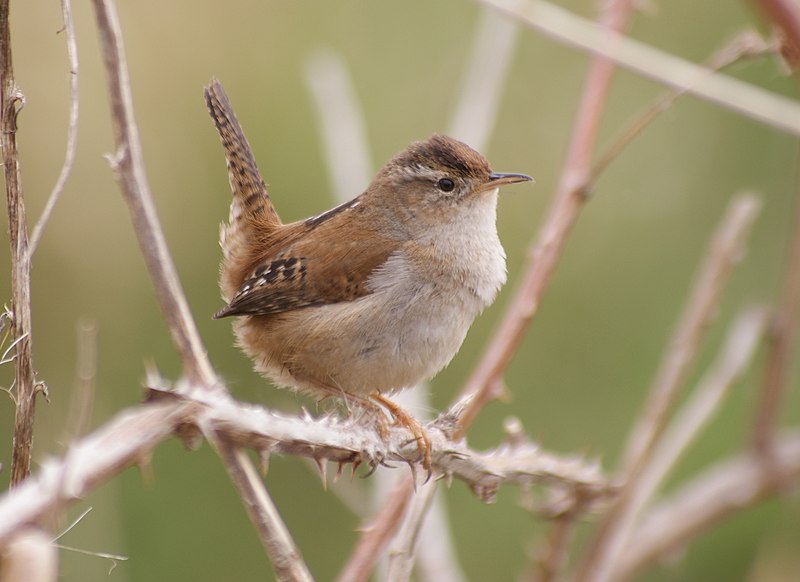
The Marsh Wren is a small bird native to North America, belonging to the wren family. It has a long bill and can be distinguished from other species of marsh birds such as the sedge wren by its size.
The Marsh Wren was first described in 1810 by Alexander Wilson under the binomial name Certhia palustris and now belongs to genus Cistothorus.
This songbird prefers wetland habitats like marshes, swamps or wetlands with dense vegetation for sheltering and nesting activities.
They build nests on grasses near water bodies which are made out of twigs attached at one end forming an enclosed cup-like structure lined with feathers or fur making it look like a woven basket.Scientific classification:
| Kingdom | Animalia |
| Phylum | Chordata |
| Class | Aves |
| Order | Passeriformes |
| Family | Troglodytidae |
| Genus | Cistothorus |
| Species | C. palustris |
Also Featured In: Wrens Species, Most Common Songs Birds that Live around You
38. Snail Kite
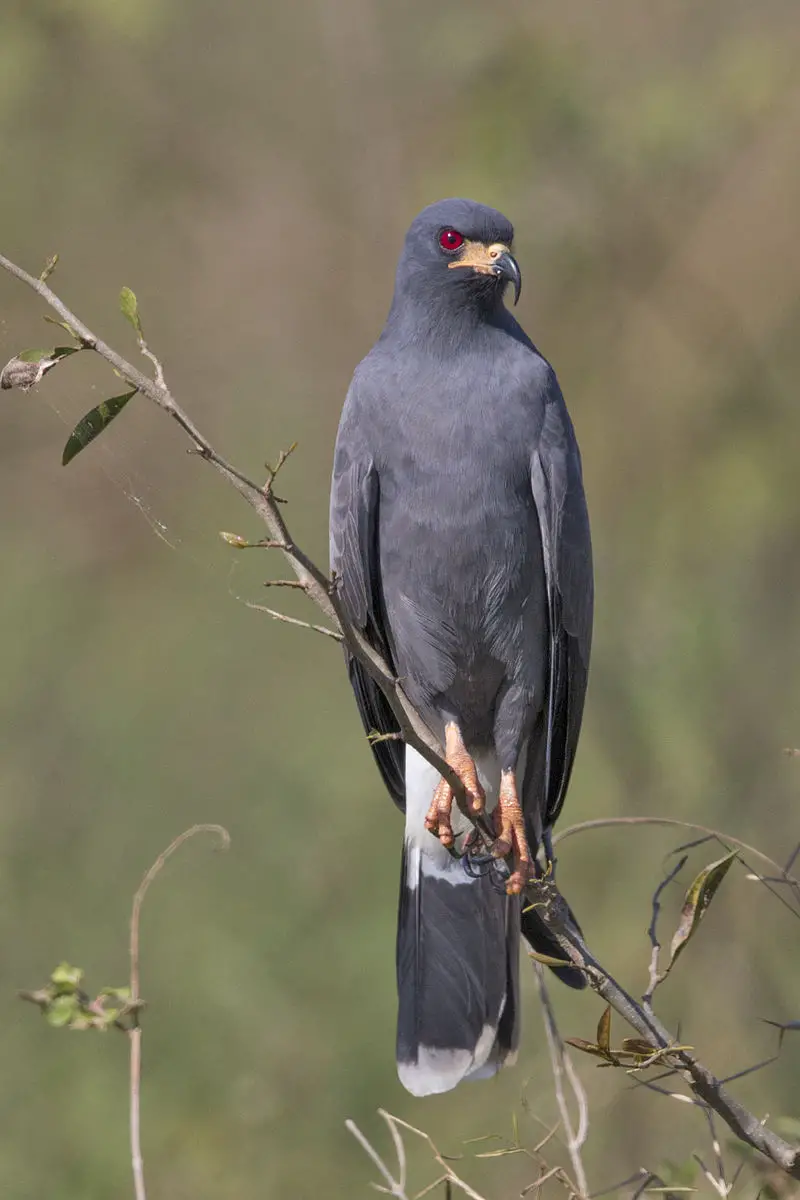
The Snail Kite is a medium sized bird of prey belonging to the Accipitridae family, which also includes eagles, hawks and Old World vultures.
It’s relative, the Slender-billed Kite was once part of this family but now belongs in Helicolestes.
The Snail Kite measures around 36 to 48 cm long with males being slightly smaller than females.
They can be identified by their yellow eyes, grey wings and reddish brown head feathers as well as their hooked bill used for catching food such as snails – hence its name.
These birds are mainly found near rivers or wetlands in tropical climates where they feed on apple snail shells filled with soft fleshy parts inside them.
This species is endangered due to habitat destruction caused by human development so conservation efforts need to be taken if we want these beautiful creatures around for many more years.Scientific classification:
| Kingdom | Animalia |
| Phylum | Chordata |
| Class | Aves |
| Order | Accipitriformes |
| Family | Accipitridae |
| Genus | Rostrhamus Lesson, 1830 |
| Species | R. sociabilis |
Also Featured In: Florida Birds, Everglades Birds
39. Sternidae
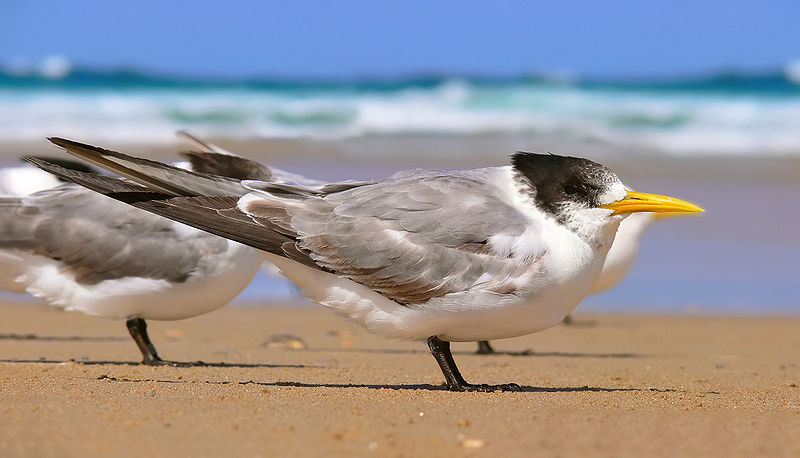
Sternidae are a subgroup of the family Laridae, consisting of eleven genera. They have slender bodies with long forked tails and narrow wings. Their bills are long and their legs relatively short.
Most species display pale grey or white plumage above, while underneath they show black markings on the head along with varying shades of browns elsewhere on their body.
These seabirds can be found in coastal areas near oceans, rivers and wetlands worldwide but especially in North America where they feed primarily on small fish which they capture by swooping down from the air to snatch them up from below the surface.
They also supplement this diet with crustaceans such as crabs when available.Scientific classification:
| Kingdom | Animalia |
| Phylum | Chordata |
| Class | Aves |
| Order | Charadriiformes |
| Family | Laridae |
| Subfamily | Sterninae Bonaparte, 1838 |
Also Featured In: Birds You’ll Find in the Sea, Flocks Birds around Us
40. Common Yellowthroat

The Common Yellowthroat is a small, New World Warbler found throughout North America. It has distinctive yellow and black plumage that earned it the nickname “Yellow Bandit” in the Midwest United States.
This species is highly adaptable and can be found inhabiting wetlands, grasslands, shrub-land habitats, as well as suburban areas.
The genus of this bird’s scientific name translates to mean ‘ground’ and ‘small bird’, which are fitting characteristics for such an elusive yet common little creature.
Its diet consists predominantly of insects but may also include other invertebrates like spiders or worms.
Overall the Common Yellowthroat makes an excellent addition to any backyard with its cheerful song.Scientific classification:
| Kingdom | Animalia |
| Phylum | Chordata |
| Class | Aves |
| Order | Passeriformes |
| Family | Parulidae |
| Genus | Geothlypis |
| Species | G. trichas |
Also Featured In: Nebraska Birds, Birds Commonly Found in New York
41. Greater Yellowlegs
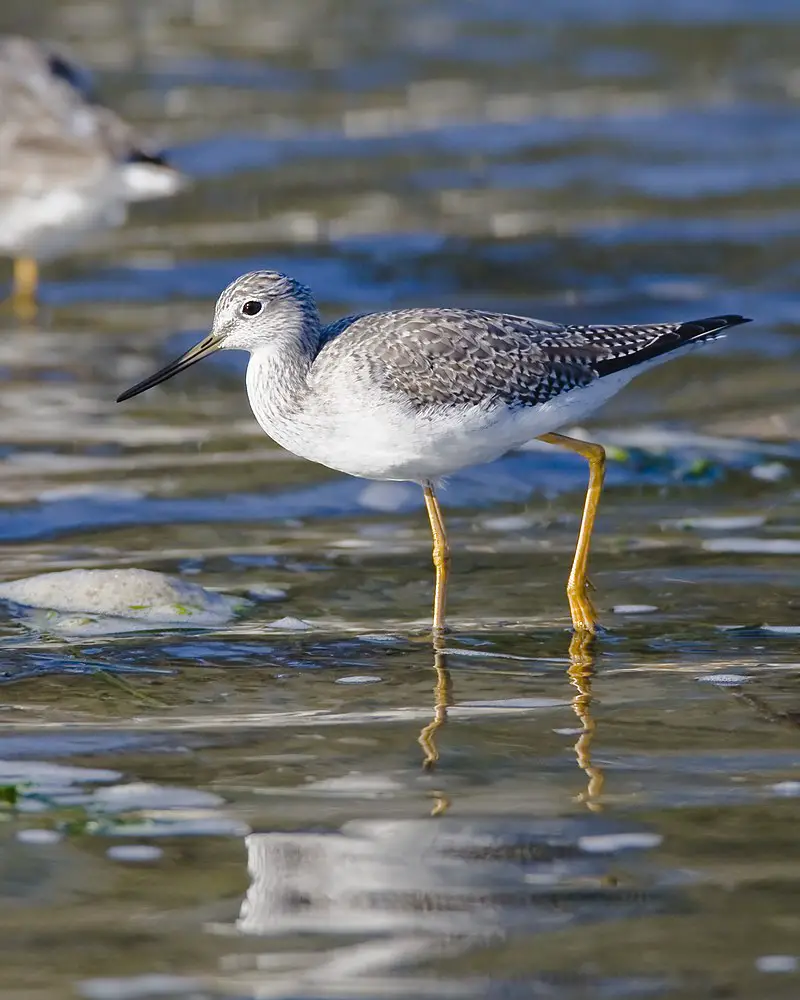
The Greater Yellowlegs is a large shorebird found in the family Scolopacidae. It nests mainly in central Canada and south Alaska, while wintering in southern North America, Central America, West Indies and South America.
The bird was formally described by German naturalist Johann Friedrich Gmelin as part of his revision to Carl Linnaeus’s Systema Naturae.
It has long yellow legs which sets it apart from other birds of its kind; when disturbed or alarmed they will flash these bright-colored limbs about wildly.
Its diet consists mostly of insects like flies, beetles, grasshoppers and dragonflies although aquatic invertebrates are also eaten on occasion.
These birds have adapted well to human habitation near shallow marshes or mudflats with plenty of food sources for them to feed upon making them an easier species for people who love bird watching.Scientific classification:
| Kingdom | Animalia |
| Phylum | Chordata |
| Class | Aves |
| Order | Charadriiformes |
| Family | Scolopacidae |
| Genus | Tringa |
| Species | T. melanoleuca |
Also Featured In: birds of Delaware, Yellow Birds that Live in Florida
42. Ruddy Duck
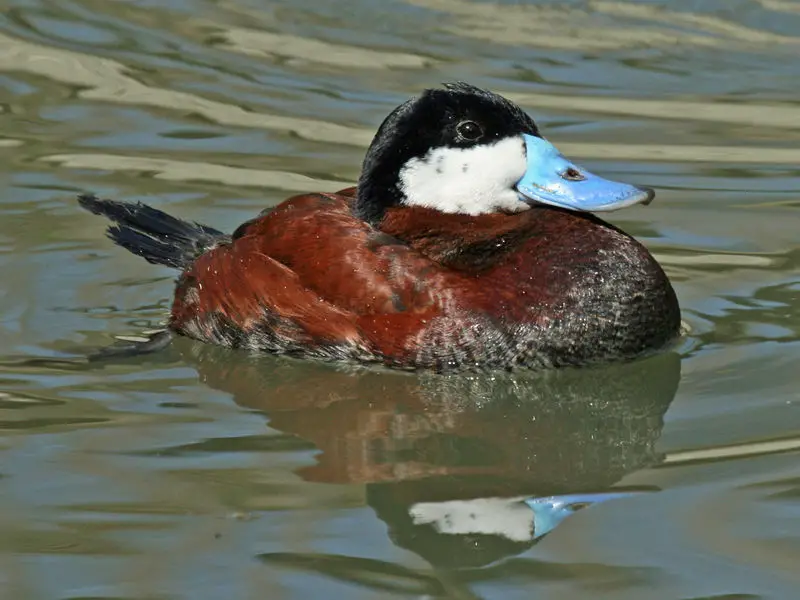
The Ruddy Duck is a North American species of duck native to Jamaica, known for its sharp tail.
It was formally described in 1789 by the German naturalist Johann Friedrich Gmelin and placed into Carl Linnaeus’ Systema Naturae.
These ducks are medium-sized with males having greyish cheeks and forehead, while females have brown heads. Both sexes also feature an orange bill with blue base and white patch on their faces near their bills.
In winter months they can be found inhabiting freshwater ponds, lakes or marshes where they feed mainly on aquatic vegetation like algae or small insects, mollusks or crustaceans as well as plant material from land nearby.
They tend to flock together during migration season when going southwards for warmer climates but usually remain solitary throughout other times of the year unless breeding which takes place between April-June each year involving nest building activities such as gathering materials for lining nests made close to water sources before laying eggs that will hatch after about one month�s time.Scientific classification:
| Kingdom | Animalia |
| Phylum | Chordata |
| Class | Aves |
| Order | Anseriformes |
| Family | Anatidae |
| Genus | Oxyura |
| Species | O. jamaicensis |
Also Featured In: birds of New Mexico, Most Common Lake Birds
43. Hooded Merganser
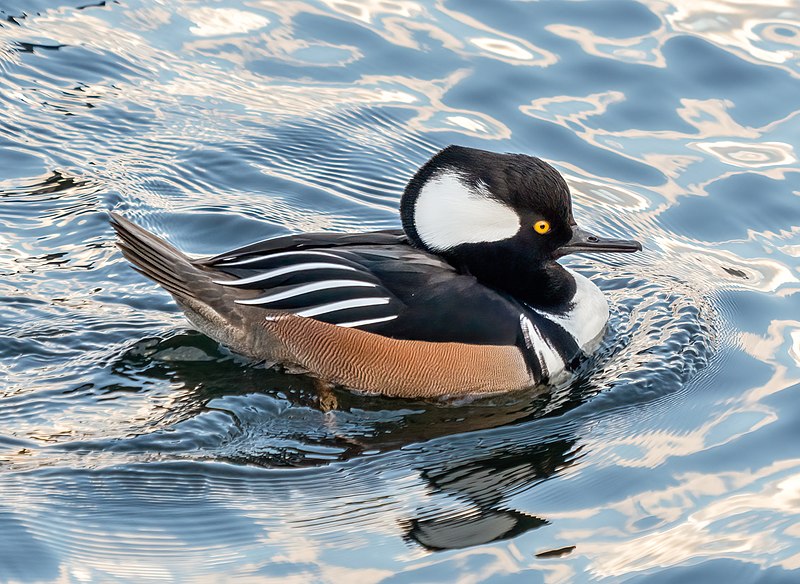
The Hooded Merganser is a beautiful and unique bird, belonging to the family of mergansers. It is easily recognizable due to its distinct crest which can be raised or lowered at will.
During breeding season, males have an impressive plumage with various colors and patterns that make them stand out even more.
They live near streams, ponds or marshes where they feed on aquatic insects, crustaceans and small fish by diving in from above the water surface with their wings open before submerging completely under it.
Their nesting habits involve using hollows created by other animals such as beavers for laying eggs inside tree cavities too close to water bodies so that they are well-protected from predators while still providing them easy access to food sources.Scientific classification:
| Kingdom | Animalia |
| Phylum | Chordata |
| Class | Aves |
| Order | Anseriformes |
| Family | Anatidae |
| Genus | Lophodytes Reichenbach, 1853 |
| Species | L. cucullatus |
Also Featured In: Birds in Pacific Northwest, Water Vermont Birds You Need to See
44. Wood Duck
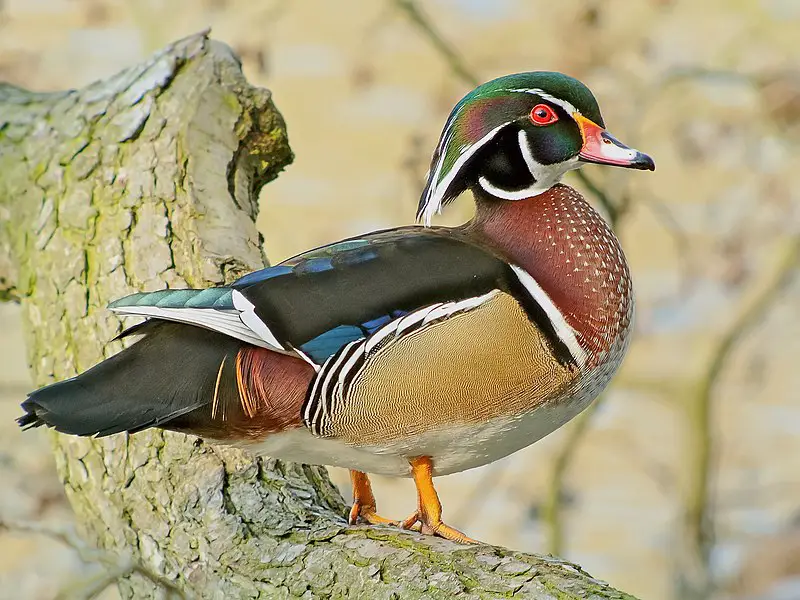
The wood duck, also known as the Carolina Duck, is a species of perching duck native to North America. It is renowned for its beautiful plumage and vibrant colors.
On average, an adult wood duck stands at 19-21 inches in length with a wingspan ranging from 26 to 29 inches. Its weight typically falls between 454–800 grams depending on gender and seasonality.
This medium-sized bird can be seen swimming or perched atop branches near bodies of water like lakes, ponds and rivers – where it feeds mostly on aquatic plants and insects.
The female builds nests inside cavities in trees close to these waters while the male protects her eggs during incubation period until they hatch into adorable little chicks.
Wood ducks are beloved by many due their stunning looks which make them popular subjects among photographers too.Scientific classification:
| Kingdom | Animalia |
| Phylum | Chordata |
| Class | Aves |
| Order | Anseriformes |
| Family | Anatidae |
| Genus | Aix |
| Species | A. sponsa |
Also Featured In: Common Central Park Birds, Common San Antonio Birds
45. Virginia Rail
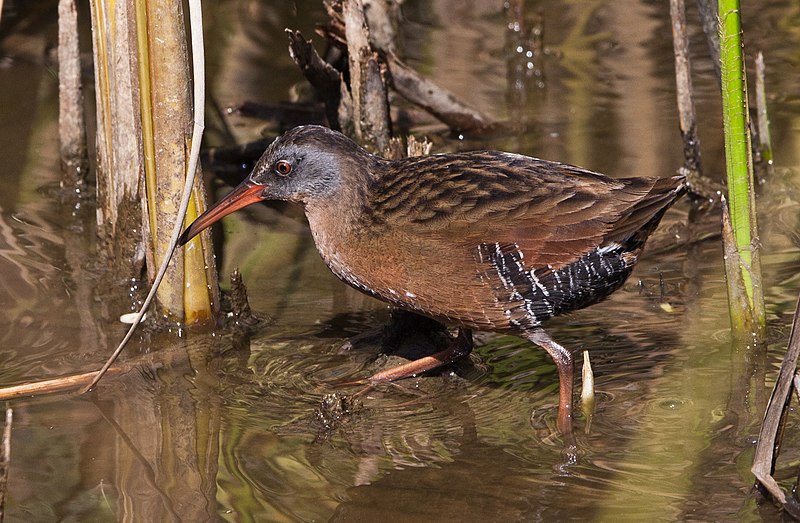
The Virginia Rail is a small waterbird which belongs to the Rallidae family. It remains fairly common in spite of habitat loss, but it’s difficult to spot since they tend to be quite secretive and their calls can often be heard more than them being seen.
They are also sometimes hunted for sport, however this does not happen very often. The Ecuadorian rail is considered by some authorities as its own species separate from the Virginia Rail, although others classify it as a subspecies.
These birds have dull coloured plumage with brownish-grey upperparts and whitish underparts; males have a reddish throat patch during breeding season while females do not possess one at all times.Scientific classification:
| Kingdom | Animalia |
| Phylum | Chordata |
| Class | Aves |
| Order | Gruiformes |
| Family | Rallidae |
| Genus | Rallus |
| Species | R. limicola |
Also Featured In: birds of Virginia, Birds You’ll Find in Night
46. Green-Winged Teal
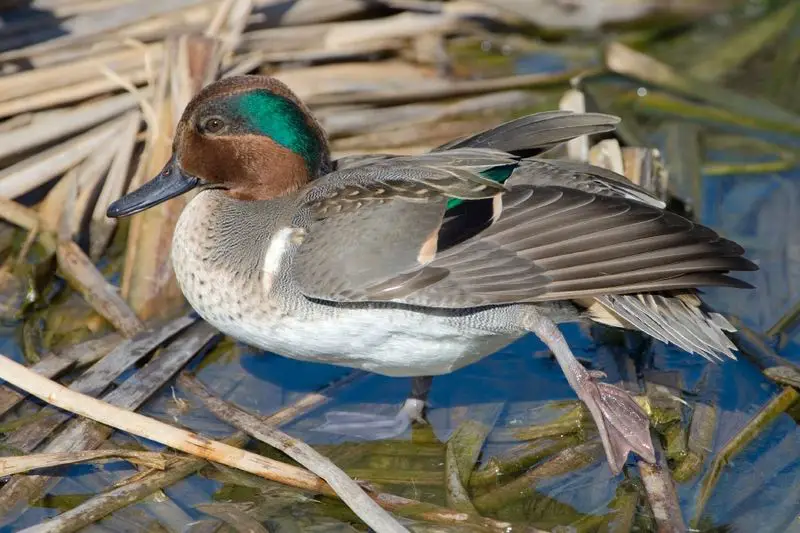
The green-winged teal is a common and widespread duck that can be found across most of North America, except for the Aleutian Islands.
It was once thought to belong to the same species as Eurasian teals but has since been classified differently by many authorities.
These small ducks have colorful wings which display shades of green and blue along with buffy brown coloration on their undersides.
The male birds are particularly striking during mating season when they acquire beautiful chestnut markings on their heads and upper breasts.
They feed mainly in shallow water bodies such as ponds, lakes, marshes or estuaries, eating aquatic invertebrates like snails or insects.
When disturbed they can fly away rapidly with a loud whistling sound produced by their wings during flight.Scientific classification:
| Kingdom | Animalia |
| Phylum | Chordata |
| Class | Aves |
| Order | Anseriformes |
| Family | Anatidae |
| Genus | Anas |
| Species | A. carolinensis |
Also Featured In: birds of green birds, Phoenix Birds You Should Know
47. Sandpiper
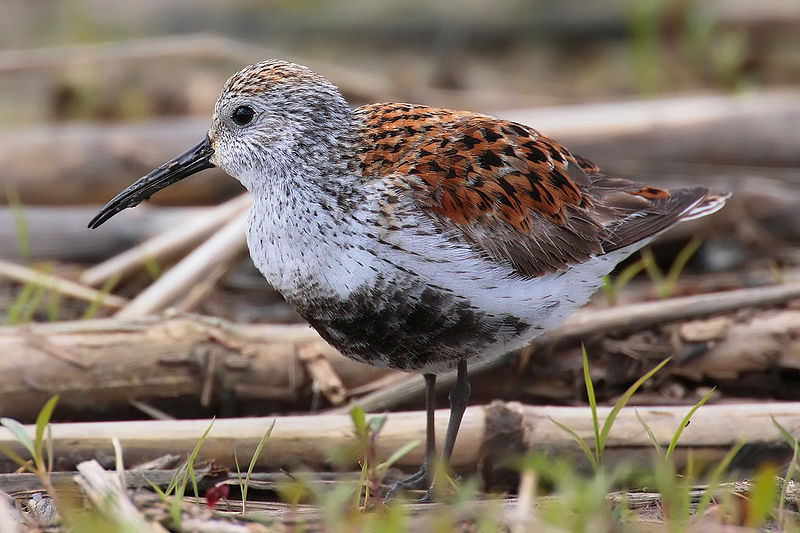
Sandpiper is a type of wading bird that belongs to the family Scolopacidae. It is a diverse family that includes various species such as curlew and snipe.
Sandpipers have different bill lengths that allow them to feed on small invertebrates and creatures found in mud or soil.
Due to this diversity, different species can coexist in the same habitat without competing for food.
Sandpipers are commonly found near the coast but are also found in other wetland environments.
They are known for their slender legs, long beak, and streamlined body that enables them to move easily in and out of water.
Sandpipers are a unique and fascinating bird species that are interesting to observe in their natural habitat.Scientific classification:
| Kingdom | Animalia |
| Phylum | Chordata |
| Class | Aves |
| Order | Charadriiformes |
| Suborder | Scolopaci |
| Family | Scolopacidae Rafinesque, 1815 |
Also Featured In: Turkey Birds You Should Know, Ukrainian Birds You Should Know
48. Anhinga
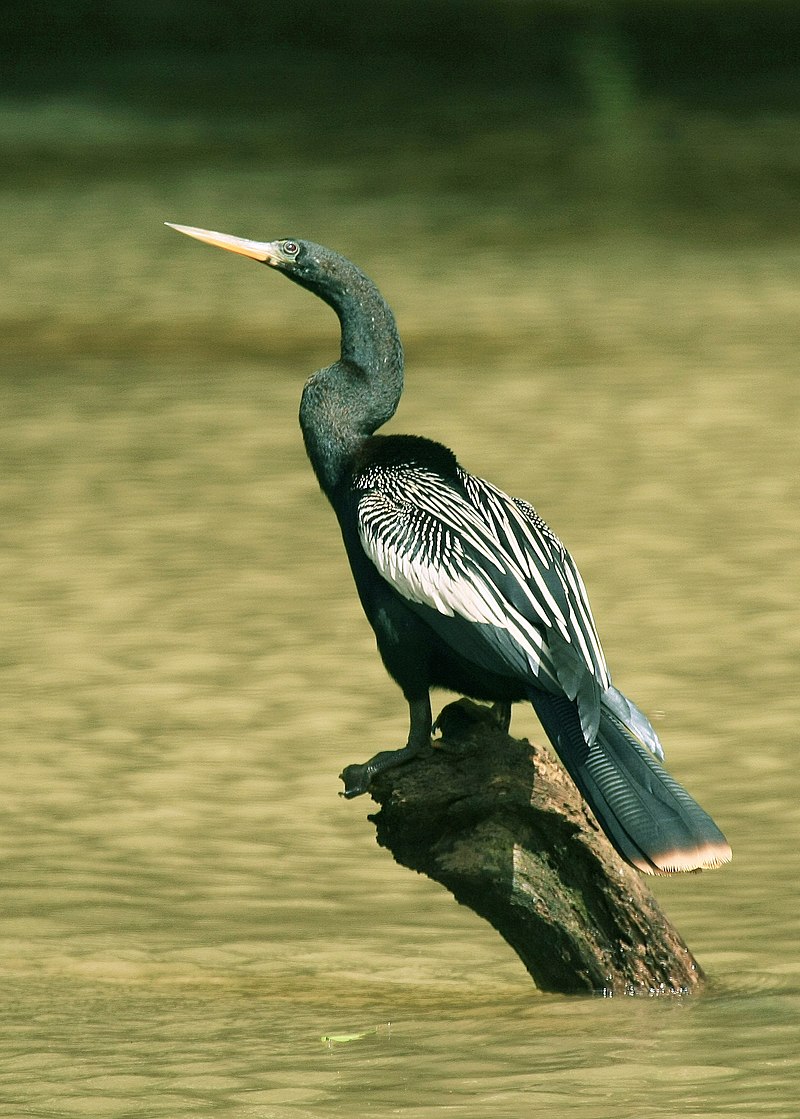
The Anhinga is a water bird found in the warmer parts of the Americas. It is sometimes called the snakebird, American darter, or water turkey.
The bird’s name comes from the Brazilian Tupi language and means “devil bird” or “snake bird.” When swimming, only the Anhinga’s neck appears above water, giving the appearance of a ready-to-strike snake.
It is a skilled swimmer and hunter, using its sharp beak to catch fish underwater. The Anhinga is easily recognizable by its long neck, sharp beak, and distinctive coloring of black and white feathers.
Its ability to dry its wings quickly after diving is unique among water birds, as it lacks the natural oils that make feathers waterproof.
The Anhinga is an important member of its ecosystem, helping to control fish populations and serving as prey for larger predators.Scientific classification:
| Kingdom | Animalia |
| Phylum | Chordata |
| Class | Aves |
| Order | Suliformes |
| Family | Anhingidae |
| Genus | Anhinga |
| Species | A. anhinga |
Also Featured In: Birds that Live around Central Florida, Birds that Live around Southwest Florida
49. Moorhen
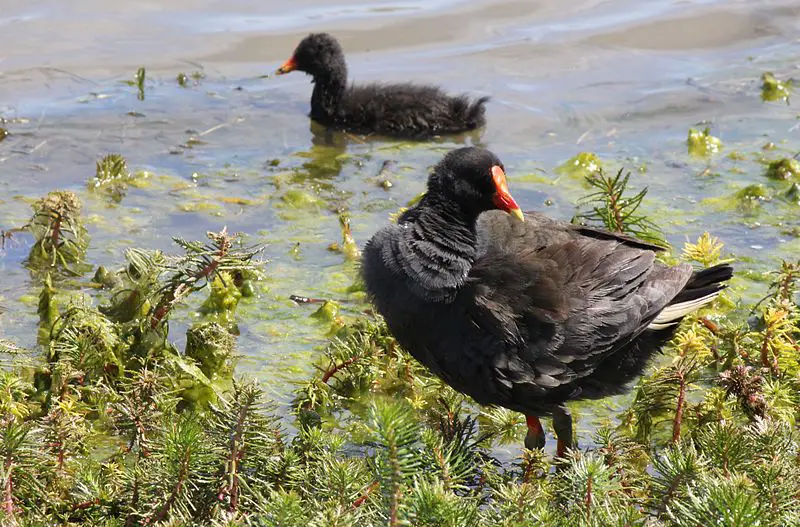
Moorhens are water birds that belong to the rail family. They are often called marsh hens and are medium-sized.
The Latin name for them is Gallinula, which means “little hen.” They are closely related to coots and are sometimes referred to as (black) gallinules.
One species of Gallinula was recently found to be different enough to form a new genus, called Paragallinula.
Moorhens are usually found near water sources such as lakes, ponds, and marshes. They have a black plumage and a red beak, and they are able to swim well.
They feed on aquatic plants, insects, and small fish. Moorhens are known for their territorial behavior and can be quite aggressive when defending their nests.Scientific classification:
| Kingdom | Animalia |
| Phylum | Chordata |
| Class | Aves |
| Order | Gruiformes |
| Family | Rallidae |
| Genus | Gallinula Brisson, 1760 |
Also Featured In: Birds of Kauai, Hawaii,
50. Common Moorhen
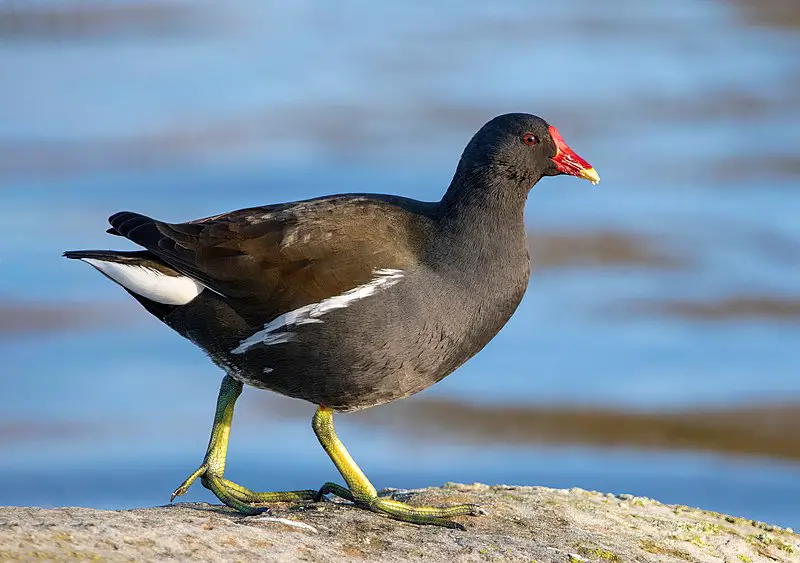
The common moorhen, also called waterhen or swamp chicken, belongs to the rail family and is widespread across various regions of the Old World.
These birds prefer to inhabit wetlands like canals, marshes, and ponds with rich vegetation. They are not found in polar regions or some tropical rainforests.
The species is known for its distinctive red forehead shield, which becomes more prominent during breeding season. Common moorhens usually feed on aquatic plants, small fishes, and invertebrates.
They are excellent swimmers and divers, but are also able to walk on floating vegetation. When threatened, they can flee by diving and swimming underwater.
Overall, common moorhens are fascinating birds that add to the diversity of wetland ecosystems.Scientific classification:
| Kingdom | Animalia |
| Phylum | Chordata |
| Class | Aves |
| Order | Gruiformes |
| Family | Rallidae |
| Genus | Gallinula |
| Species | G. chloropus |
Also Featured In: Birds that Commonly Found in Pond , Amsterdam Birds You Should Know
51. Sora
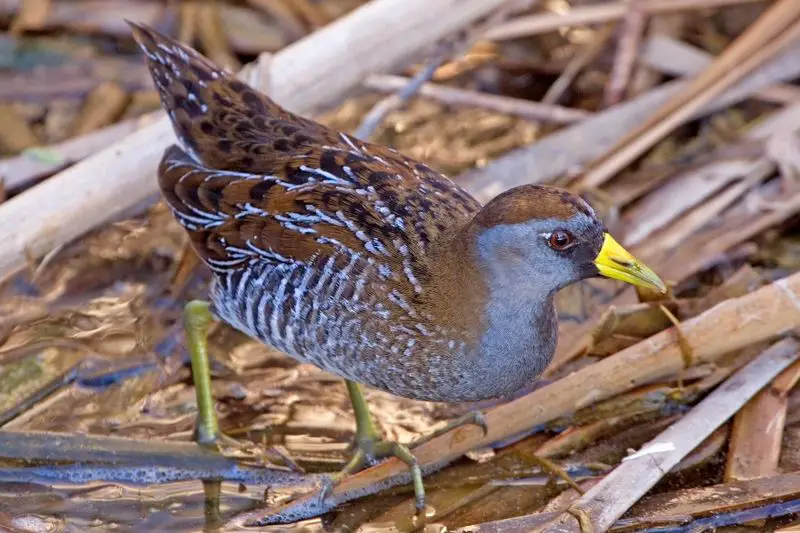
The Sora bird, a member of the rail family Rallidae, can be found throughout much of North America. Its genus name Porzana is derived from Venetian terms for small rails, while its specific name carolina refers to the Carolina Colony.
The common name “Sora” is likely taken from a Native American language. Soras are small waterbirds, sometimes called sora rails or sora crakes. These birds are characterized by their brownish-gray plumage and short, straight bills.
They can be found in marshes, wetlands, and other waterlogged areas, where they typically feed on seeds and insects.
Despite their small size, soras are migratory birds and travel long distances during their seasonal migrations.
Overall, the Sora bird is an interesting and important member of the North American avian community.Scientific classification:
| Kingdom | Animalia |
| Phylum | Chordata |
| Class | Aves |
| Order | Gruiformes |
| Family | Rallidae |
| Genus | Porzana |
| Species | P. carolina |
Also Featured In: Birds You’ll Find in South Texas , Birds You’ll Find in the Rio Grande Valley